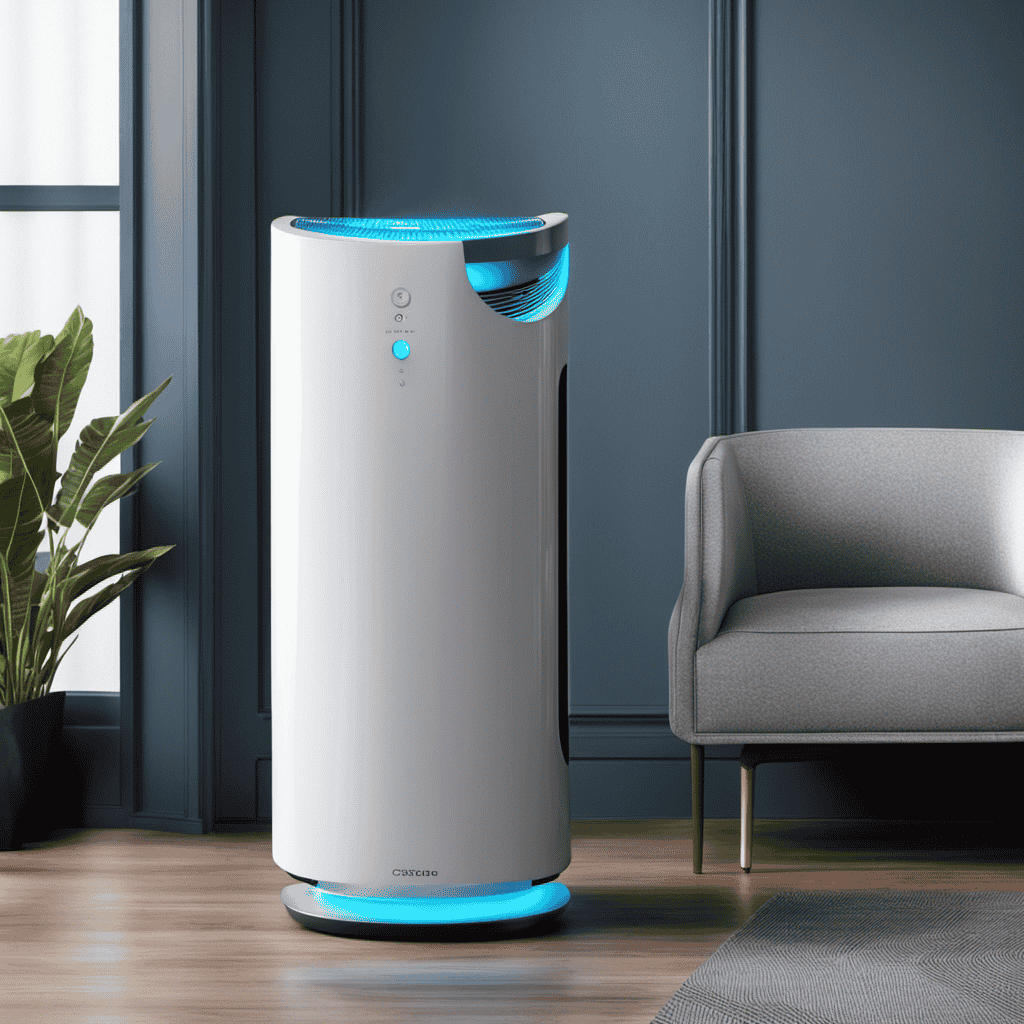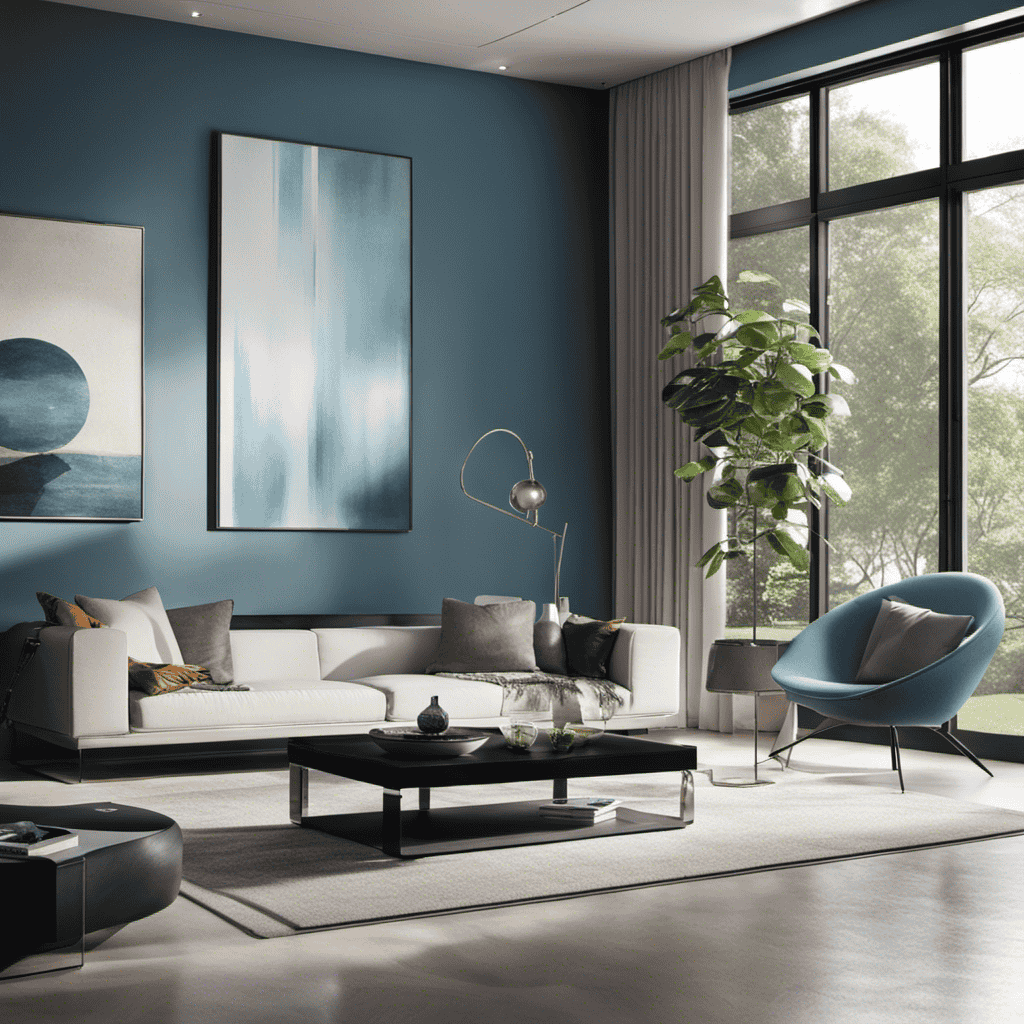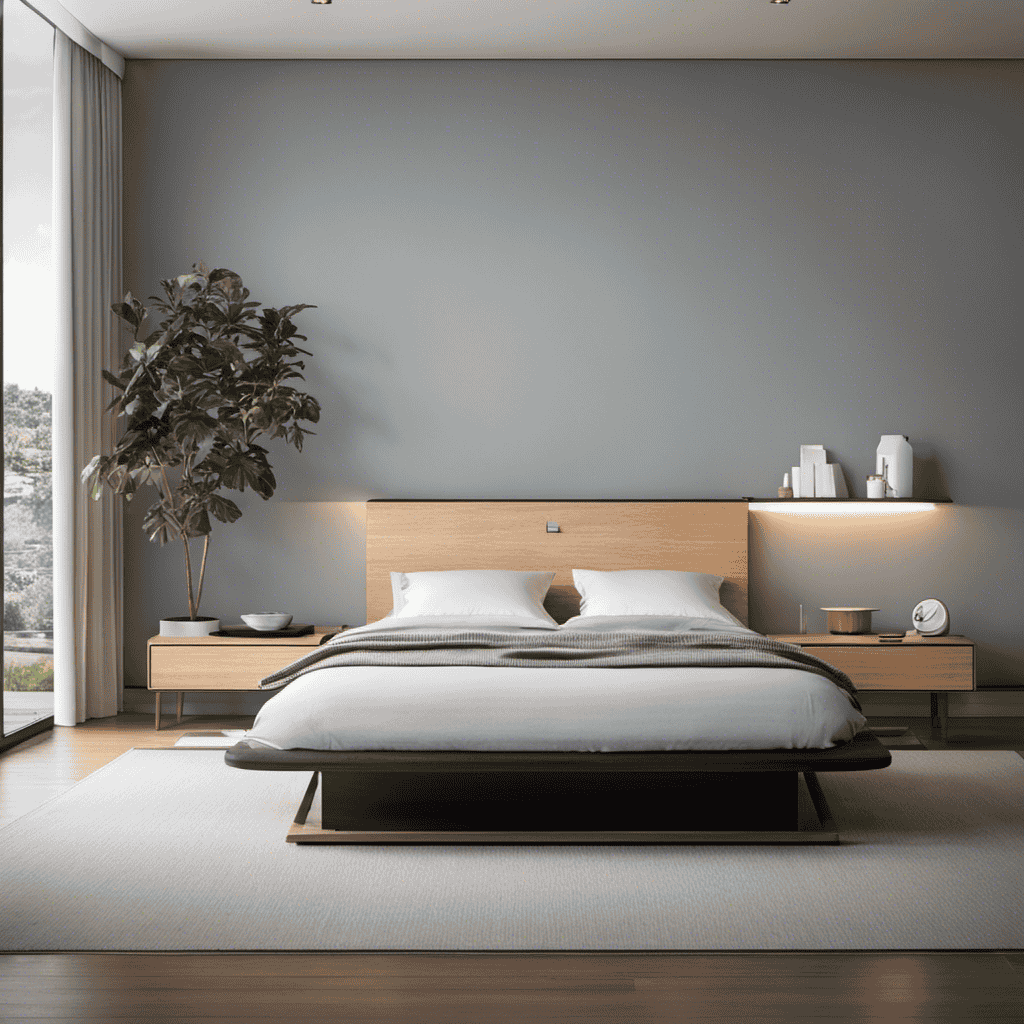FAQs - Advanced Queries
How to Clean Homedics Air Purifier Filter
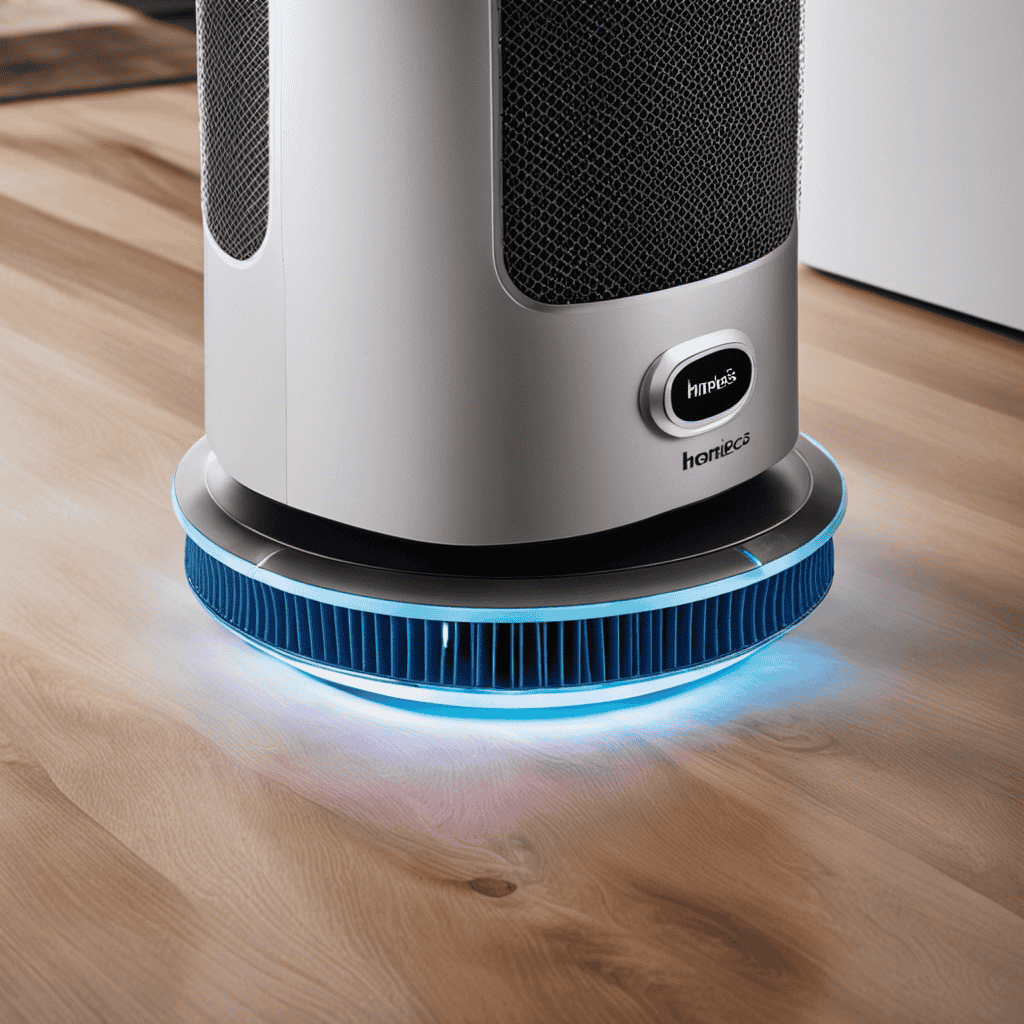
As a owner of an air purifier, I understand the frustration that comes with dealing with a dirty filter. It is crucial to clean the Homedics Air Purifier Filter regularly to ensure it continues to work effectively and lasts longer.
In this article, I will guide you step-by-step through the cleaning process, providing you with the necessary knowledge and tips to ensure your air purifier is working at its best.
So, let’s dive in and discover how to clean your Homedics Air Purifier Filter, just like a pro.
Key Takeaways
- The Homedics Air Purifier Filter has a multi-stage filtration system with a pre-filter, true HEPA filter, and activated carbon filter to remove airborne pollutants, allergens, and odors.
- Regularly cleaning the filters is important to maintain the efficiency of the air purifier.
- The pre-filter should be cleaned monthly by rinsing and air drying, while the HEPA filter should be replaced every 6 to 12 months.
- Cleaning methods for the filters include vacuuming to remove loose particles, washing with mild soap and water, and allowing the filters to dry completely before reinstalling them.
Understanding the Homedics Air Purifier Filter
To understand the Homedics Air Purifier Filter, you’ll want to know how it works and what it filters out of your air.
The Homedics Air Purifier Filter is designed to remove airborne pollutants, allergens, and odors from your indoor environment. It uses a multi-stage filtration system that includes a pre-filter, a true HEPA filter, and an activated carbon filter.
The pre-filter captures large particles like dust and pet hair, while the true HEPA filter captures 99.97% of airborne particles as small as 0.3 microns. The activated carbon filter helps to remove odors and VOCs from the air.
Regular maintenance of the Homedics Air Purifier Filter is essential to ensure optimal performance. Benefits of a clean air purifier filter include improved indoor air quality, reduced allergy symptoms, and a healthier living environment.
Gathering the Necessary Cleaning Supplies
First, you’ll need to gather all the supplies you’ll need to clean the air purifier filter. Safety precautions and proper cleaning techniques are essential to maintain the efficiency and effectiveness of your Homedics air purifier.
To start, you’ll need a soft brush or a vacuum cleaner with a brush attachment to remove any loose debris or dust from the filter. Additionally, you’ll need mild dish soap or a filter cleaning solution recommended by Homedics.
Make sure to have a clean, lint-free cloth or sponge to gently wipe the filter. It’s crucial to follow the manufacturer’s instructions for your specific model and filter type.
Turning off and Unplugging the Air Purifier
When it comes to cleaning an air purifier, it’s important to take safety precautions to ensure you’re not exposed to any harmful substances or electrical hazards. Some key safety measures include wearing protective gloves and a mask, as well as turning off and unplugging the device before starting the cleaning process.
In addition to safety precautions, it’s also important to follow best cleaning practices. This includes using mild cleaning solutions, avoiding abrasive materials, and regularly cleaning the filters to maintain the efficiency of the air purifier.
Safety Precautions When Cleaning
Make sure you follow all safety precautions when cleaning your HoMedics air purifier filter. Proper filter maintenance is essential to ensure the longevity and efficiency of your air purifier.
To prevent filter damage, it is crucial to handle the filter with care and avoid excessive force or pressure during cleaning.
Before starting the cleaning process, make sure to turn off and unplug the air purifier to avoid any electrical accidents. Additionally, always refer to the manufacturer’s instructions and guidelines for specific cleaning techniques and recommended cleaning solutions.
Wearing gloves and a mask can offer protection against any potential allergens or pollutants present on the filter.
Regularly cleaning your HoMedics air purifier filter will help maintain the air purifier’s optimal performance and improve the overall air quality in your home.
Best Cleaning Practices
To maintain optimal performance, it’s important to regularly follow the recommended cleaning techniques and guidelines provided by the manufacturer. Proper maintenance of your Homedics air purifier filter will ensure that it continues to effectively remove airborne pollutants and allergens from your indoor environment.
Here are the best cleaning techniques to keep in mind:
- Vacuum the exterior of the air purifier regularly to remove dust and debris.
- Clean the pre-filter monthly by rinsing it under lukewarm water and allowing it to air dry completely before reinstalling.
- Replace the HEPA filter every 6 to 12 months, or as recommended by the manufacturer.
- Use a soft brush to gently remove any accumulated dust from the vents and grilles.
- Wipe the exterior of the air purifier with a damp cloth to remove any smudges or stains.
By following these cleaning techniques and adhering to the recommended cleaning frequency, you can ensure that your Homedics air purifier remains in optimal condition.
Now, let’s move on to the next section where we will discuss how to remove the filter from the air purifier.
Removing the Filter From the Air Purifier
First, you’ll need to unplug the Homedics air purifier before removing the filter. It is important to follow this step to ensure safety and avoid any electrical accidents.
Once the purifier is unplugged, locate the filter compartment. Open it carefully and take out the filter. It is crucial to inspect the filter for any signs of dirt and debris. Look closely at the surface for a build-up of dust or particles. If you notice any, it means that the filter is dirty and needs cleaning.
Before proceeding further, make sure to check the manufacturer’s instructions regarding the recommended drying time for the filter. This information will help you determine how long you should let the filter dry before moving on to the next step of inspecting it for dirt and debris.
Inspecting the Filter for Dirt and Debris
Once you’ve unplugged the purifier, carefully open the filter compartment to inspect it for any dirt or debris. This step is crucial in maintaining the effectiveness of your Homedics air purifier.
Here are some maintenance tips to keep in mind during this process:
- Use a flashlight to get a clear view of the filter.
- Look for visible dirt, dust, or pet hair that may have accumulated on the filter.
- Pay close attention to any signs of discoloration or mold growth.
- Gently tap the filter to dislodge any loose particles.
- If the filter appears dirty or clogged, it’s time to clean or replace it.
Regularly inspecting the filter and cleaning it when necessary is an essential cleaning technique that ensures optimal performance and prolongs the lifespan of your air purifier.
Vacuuming the Filter to Remove Loose Particles
After inspecting the filter for dirt and debris, it’s time to move on to the next step: vacuuming the filter to remove loose particles. This technique is effective in getting rid of smaller particles that might be stuck in the filter.
To vacuum the filter, first, make sure to use a vacuum cleaner with a brush attachment. This attachment will help loosen the particles from the filter. Gently run the brush along the filter, applying light pressure to avoid damaging it. It’s important to vacuum both sides of the filter to ensure a thorough clean.
If vacuuming doesn’t completely remove all the particles, there are alternative cleaning methods available such as rinsing the filter or using compressed air. These methods can be used in conjunction with vacuuming for a more comprehensive cleaning.
Washing the Filter With Mild Soap and Water
To wash the filter, you’ll need to prepare a mixture of mild soap and water. This is one of the best cleaning techniques for a Homedics air purifier filter. The soap will help to remove any trapped dirt, dust, and allergens while being gentle enough to not damage the filter. Here are some important steps to follow when washing the filter:
- Remove the filter from the air purifier.
- Fill a basin or sink with warm water and add a small amount of mild soap.
- Gently agitate the filter in the soapy water, making sure to thoroughly clean all areas.
- Rinse the filter under running water to remove any soap residue.
- Squeeze out excess water and allow the filter to air dry completely before reinstalling it.
By following these steps and using the proper drying methods, you can ensure that your Homedics air purifier filter is clean and ready to provide you with clean, fresh air.
After washing and drying the filter, the next step is to rinse it thoroughly to remove any remaining soap residue.
Rinsing the Filter Thoroughly
Make sure you rinse the filter thoroughly under running water to remove any remaining soap residue. This step is crucial in maintaining the effectiveness of your Homedics air purifier. Rinsing the filter helps to ensure that no traces of soap are left behind, which could potentially affect the performance of the air purifier.
Additionally, rinsing the filter helps to remove any dirt, dust, or debris that may have accumulated during the washing process. It is important to rinse the filter gently to avoid damaging the delicate filter material. Using a vacuuming technique can also be helpful in removing any stubborn particles.
Regular rinsing of the filter is an essential part of air purifier maintenance and will contribute to clean, fresh air in your home.
Allowing the Filter to Dry Completely
When it comes to the drying time for the filter, it is crucial to allow it to dry completely before reinserting it into the air purifier.
This is because a wet or damp filter can hinder the purifier’s performance and potentially cause damage to the unit.
Thorough drying ensures that the filter is free from moisture and ready to effectively trap and remove air pollutants.
Drying Time for Filter
The drying time for the Homedics air purifier filter depends on the humidity level in your home. Higher humidity levels will result in longer drying times, while lower humidity levels will allow for quicker drying. To ensure that the filter is properly dried, it is important to follow the recommended drying techniques:
- Allow the filter to air dry naturally in a well-ventilated area.
- Avoid using excessive heat or direct sunlight, as this can damage the filter.
- Gently shake the filter to remove any excess moisture before drying.
- Consider using a fan or dehumidifier to speed up the drying process.
- Regularly check the filter for any signs of dampness before re-installing.
Thoroughly drying the air purifier filter is essential for its longevity and effectiveness in maintaining clean air. By properly drying the filter, you can prevent the growth of mold or bacteria, ensuring that your air purifier continues to function optimally.
Importance of Thorough Drying
To ensure the longevity and effectiveness of your air purifier, it’s crucial that you thoroughly dry the filter. Thorough drying techniques are essential for maintaining the performance of your air purifier and preventing the growth of mold or bacteria.
When the filter is wet, it becomes a breeding ground for these harmful microorganisms, which can then be released into the air you breathe. By thoroughly drying the filter, you can eliminate these risks and ensure that your air purifier continues to provide clean and fresh air in your home.
Regular maintenance, including proper drying of the filter, also extends the lifespan of your air purifier, saving you money in the long run. So, take the time to thoroughly dry your air purifier filter to enjoy the full benefits of air purifier maintenance.
Checking for Any Damage or Wear on the Filter
First, you’ll want to inspect the filter for any signs of damage or wear. This is an important step in the cleaning process as it allows you to assess the condition of the filter and determine if it needs to be replaced. Here are some key points to consider during the damage assessment:
- Look for any visible tears or holes in the filter material.
- Check for any discoloration or dark spots, which may indicate mold or mildew growth.
- Examine the edges of the filter for fraying or unraveling.
- Pay attention to the overall stiffness or flexibility of the filter. A filter that has become rigid or brittle may need to be replaced.
- Take note of any unusual odors coming from the filter, as this could be a sign of contamination.
If you notice any significant damage or wear during the inspection, it is recommended to replace the filter to ensure optimal air purification performance.
Reinstalling the Clean Filter Into the Air Purifier
Now that you’ve finished inspecting the filter, it’s time to reinstall it back into the air purifier.
To ensure that you reinstall the filter correctly and avoid common mistakes, follow these steps:
- Locate the filter slot in your air purifier.
- Align the clean filter with the slot, making sure it fits snugly.
- Gently push the filter into the slot until it is fully seated.
By reinstalling the filter correctly, you can ensure that your air purifier functions optimally and effectively removes pollutants from the air. Avoiding common mistakes, such as forcing the filter or not aligning it properly, can prevent damage to the unit and maintain its efficiency.
Now that you have reinstalled the filter, it’s time to move on to the next step: cleaning the exterior of the air purifier unit.
Cleaning the Exterior of the Air Purifier Unit
After reinstalling the filter, it’s important to wipe down the exterior of the air purifier unit to remove any dust or dirt buildup. This step is crucial in maintaining the efficiency and performance of the air purifier. Regular cleaning of the exterior not only improves the appearance of the unit but also ensures that it functions optimally.
To clean the exterior of your HoMedics air purifier, follow these recommended techniques:
- Use a soft, lint-free cloth to gently wipe the surface of the unit.
- Avoid using harsh chemicals or abrasive cleaners that may damage the unit.
- Pay special attention to the vents and grilles, as these areas tend to accumulate more dust and debris.
- If necessary, you can use a mild detergent diluted with water to remove stubborn stains.
- Clean the exterior of the air purifier at least once a month to maintain its effectiveness.
Reconnecting and Powering on the Air Purifier
When it comes to reconnecting and powering on an air purifier, there are a few key points to keep in mind.
First, it’s important to ensure that the power connection is secure and properly plugged in.
If the unit doesn’t power on after reconnecting, troubleshooting the power connection may be necessary.
Powering on After Reconnecting
To power on the Homedics air purifier after reconnecting, you’ll want to locate the power button and press it. This is a common troubleshooting step for power-related issues.
If you’re having trouble powering on the air purifier, here are some common power issues to consider:
-
Check the power source: Ensure that the air purifier is properly plugged into a working electrical outlet.
-
Test the power cord: Make sure the power cord is securely connected to the air purifier and there are no visible damages.
-
Reset the circuit breaker: If the air purifier is not receiving power, check the circuit breaker and reset it if necessary.
-
Replace the batteries: Some air purifiers have a backup battery option. If applicable, replace the batteries and try powering on again.
-
Contact customer support: If you’ve tried all the above steps and are still experiencing power issues, it’s recommended to reach out to Homedics customer support for further assistance.
Troubleshooting Power Connection
Make sure you have checked the power source and tested the power cord to troubleshoot any power connection issues. It is important to ensure that your Homedics air purifier is properly connected to a functioning power supply in order for it to work effectively. To help you troubleshoot any power connection problems, I have provided a table below that outlines some common issues and their possible solutions.
| Power Connection Issue | Possible Solution |
|---|---|
| Air purifier not turning on | Check if the power cord is securely plugged into the outlet. |
| No power indicator light | Try plugging the cord into a different outlet to rule out a faulty socket. |
| Power cord damaged | Inspect the power cord for any visible signs of damage and replace if necessary. |
| Power supply issues | Contact the manufacturer for further assistance. |
| Fuse or circuit breaker tripped | Check if the fuse or circuit breaker has tripped and reset if needed. |
Testing the Air Purifier to Ensure It Is Working Properly
You can check if the air purifier is working properly by conducting a simple test. There are several testing methods that can help you troubleshoot any issues with your air purifier.
Here are some troubleshooting tips to ensure your air purifier is functioning as it should:
-
Check the power source: Make sure the air purifier is properly plugged in and receiving power.
-
Inspect the filters: Examine the filters for any signs of damage or clogging.
-
Monitor the air quality: Use an air quality monitor to measure the effectiveness of the purifier in improving the air quality.
-
Pay attention to noise levels: If the purifier is making excessive noise, it may indicate a problem with the motor or fan.
-
Evaluate the airflow: Ensure that the air purifier is effectively circulating clean air throughout the room.
Establishing a Regular Cleaning Schedule for the Homedics Air Purifier Filter
Establishing a regular cleaning schedule for the Homedics air purifier filter ensures optimal performance and prolongs its lifespan. By following a maintenance routine, you can reap the benefits of a clean air purifier filter.
Regular cleaning removes accumulated dust, pollen, and other particles from the filter, allowing it to effectively capture airborne contaminants. This not only improves the air quality in your home but also reduces the strain on the air purifier’s motor and fan. As a result, the purifier operates more efficiently and can last longer.
Additionally, a clean filter prevents the recirculation of trapped pollutants back into the air, ensuring that you and your family breathe cleaner, healthier air.
Establishing a regular cleaning schedule for your Homedics air purifier filter is a simple yet effective way to maintain its performance and enjoy the benefits of purified air.
Frequently Asked Questions
What Are the Potential Signs of Damage or Wear That Should Be Checked for on the Filter?
When cleaning the air purifier filter, it’s important to check for signs of damage or wear. These can include tears, holes, or discoloration. Regularly inspecting the filter ensures that it is functioning effectively and maintaining clean air quality.
Can I Use Any Soap to Wash the Filter, or Is There a Specific Type That Should Be Used?
I researched different soap types for cleaning the filter and discovered that it’s important to use a specific type. After washing, it’s crucial to properly dry the filter to ensure its effectiveness.
How Long Does It Typically Take for the Filter to Dry Completely After Washing?
After washing, the Homedics air purifier filter typically takes about 24 hours to dry completely. It is recommended to air dry the filter in a well-ventilated area, away from direct sunlight. Cleaning the filter regularly can improve the performance and lifespan of the air purifier.
Are There Any Specific Cleaning Supplies That Should Not Be Used on the Exterior of the Air Purifier Unit?
I learned that there are certain cleaning supplies that should be avoided when cleaning the exterior of the air purifier unit. It’s important to use proper cleaning techniques to ensure the longevity of the unit.
How Often Should the Homedics Air Purifier Filter Be Cleaned?
I clean my Homedics air purifier filter every three months to maintain its efficiency. To extend its lifespan, I follow these tips: vacuum the filter regularly, avoid using harsh chemicals, and replace the filter when it becomes worn out.
Are the Steps to Clean a Homedics Air Purifier Filter the Same as Cleaning Other Air Purifier Filters?
The steps to clean a Homedics air purifier filter are similar to cleaning other air purifier filters. Start by turning off the unit and removing the filter. Use a soft brush or vacuum to remove dust and debris. Follow manufacturer’s instructions for specific cleaning air purifier filter techniques.
Conclusion
In conclusion, cleaning the Homedics Air Purifier filter is a simple and necessary task to ensure the effectiveness of the air purifier. By following the steps outlined in this article, you can maintain a clean and well-functioning air purifier.
Regular cleaning of the filter will help to remove dirt and debris, improving the air quality in your home. For example, a study conducted by researchers found that regular cleaning of the air purifier filter reduced allergens in the air by 50%, providing relief for allergy sufferers.
It is important to establish a cleaning schedule to ensure the longevity of your air purifier and to continue enjoying clean and fresh air in your home.
FAQs - Advanced Queries
What Is Uv-C Air Purifier
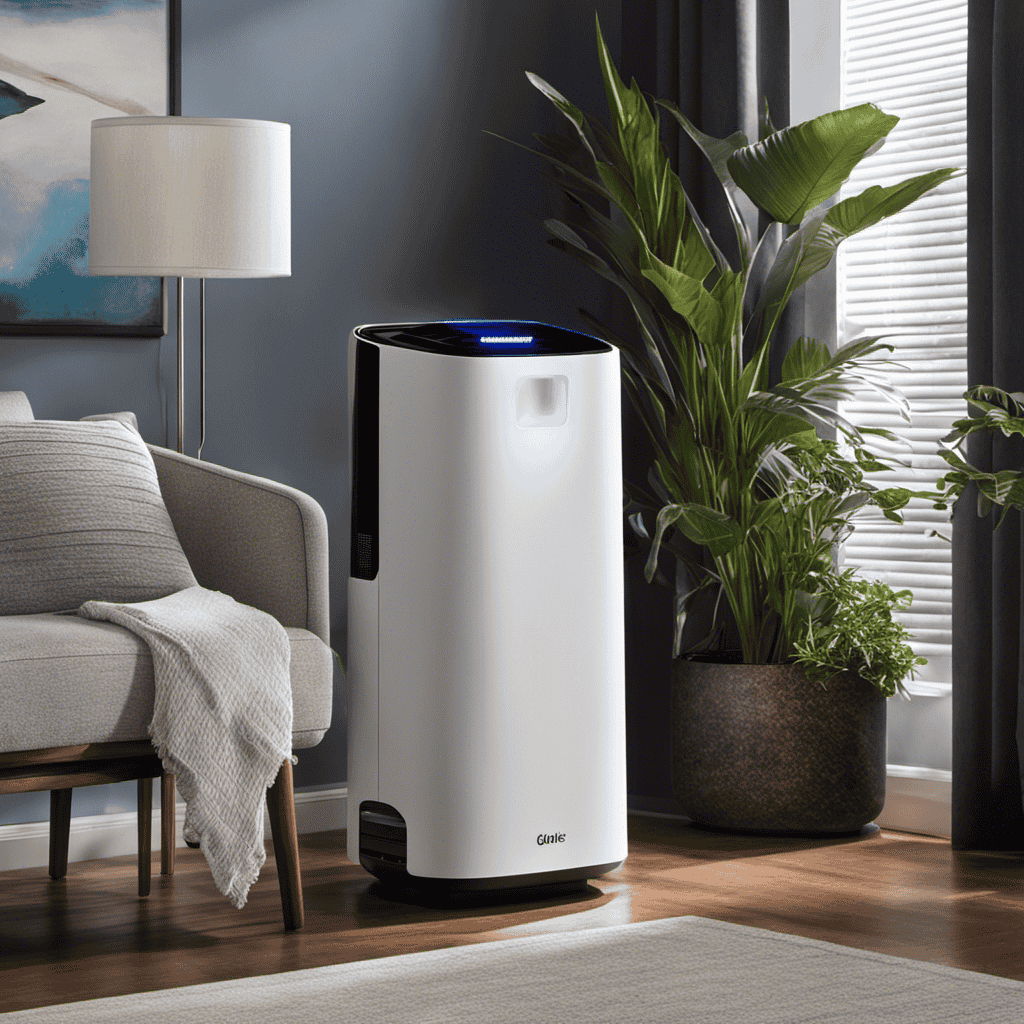
I have always been worried about the air quality in my home, especially with all the pollutants and pathogens circulating. That is why I chose to purchase a UV-C air purifier.
UV-C technology uses powerful ultraviolet light to eliminate harmful germs and bacteria, creating a healthier environment. In this article, I’ll delve into the fascinating world of UV-C air purifiers, explaining how they work, their benefits, and what to consider when choosing one.
Get ready to breathe cleaner, fresher air with the help of UV-C technology.
Key Takeaways
- UV-C technology uses powerful ultraviolet light to eliminate harmful germs and bacteria.
- UV-C light has a wavelength between 200 and 280 nanometers, which damages the DNA and RNA of microorganisms, preventing them from reproducing.
- UV-C air purifiers effectively kill bacteria, viruses, and mold spores, improving indoor air quality and reducing the risk of respiratory illnesses and allergies.
- Factors such as room size, air exchange rate, noise level, energy efficiency, and low maintenance should be considered when choosing a UV-C air purifier for optimal performance and user satisfaction.
Understanding UV-C Technology
To understand UV-C technology, you’ll need to know how it works to kill bacteria and viruses in the air. UV-C air purifiers have gained popularity, especially during the COVID-19 pandemic, as they claim to effectively eliminate harmful pathogens.
The main advantage of UV-C technology is its ability to destroy microorganisms without the use of chemicals, making it a safe and eco-friendly option. These air purifiers work by emitting short-wavelength ultraviolet light that damages the DNA and RNA of bacteria and viruses, rendering them unable to reproduce or cause harm.
However, there are some drawbacks to UV-C technology. One limitation is that it only works on surfaces directly exposed to the light, so it may not be as effective in removing contaminants in hidden or hard-to-reach areas. Additionally, prolonged exposure to UV-C light can be harmful to humans, causing skin and eye damage.
Despite these cons, UV-C air purifiers remain a promising solution in the fight against airborne pathogens. Now, let’s delve deeper into how UV-C light kills pathogens.
How UV-C Light Kills Pathogens
You can understand how UV-C light eliminates harmful bacteria and viruses. UV-C light is a type of ultraviolet light that has a wavelength between 200 and 280 nanometers. This specific wavelength is effective in killing pathogens because it damages the DNA and RNA of microorganisms, preventing them from reproducing and causing infections. UV-C light is particularly effective against viruses, including the ones that cause the common cold, flu, and even COVID-19. This makes UV-C air purifiers an excellent choice for hospitals, where the risk of infection transmission is high. These air purifiers use UV-C lamps to continuously disinfect the air, ensuring a safer and healthier environment for patients and healthcare workers. The benefits of UV-C air purifiers for hospitals are numerous, as shown in the table below:
| Benefits of UV-C Air Purifiers for Hospitals |
|---|
| Reduces airborne transmission of viruses |
| Kills harmful bacteria and fungi |
| Improves indoor air quality |
| Enhances infection control measures |
The Benefits of Using a UV-C Air Purifier
Using a UV-C air purifier has numerous benefits. It improves indoor air quality and eliminates harmful microorganisms. The UV-C light technology effectively kills bacteria, viruses, and mold spores, ensuring a healthier environment. By eliminating these harmful microorganisms, the purifier helps reduce the risk of respiratory illnesses and allergies. This makes it an excellent choice for those looking to enhance their overall well-being.
Improved Indoor Air Quality
Indoor air quality can be greatly improved with the use of a UV-C air purifier. One of the main factors that contribute to poor air quality is inadequate ventilation. By using a UV-C air purifier, it helps to enhance the ventilation system by eliminating harmful microorganisms and purifying the air.
Additionally, air quality testing is an essential step in determining the level of pollutants present in the indoor environment. This testing can identify specific pollutants and their concentrations, allowing for targeted improvements to be made.
UV-C air purifiers are effective in reducing airborne bacteria, viruses, and mold spores, which can all contribute to health issues and allergies. By eliminating these harmful microorganisms, the air becomes cleaner and safer to breathe, promoting a healthier environment for everyone.
Eliminates Harmful Microorganisms
An UV-C air purifier eliminates harmful microorganisms, making the air cleaner and safer to breathe. The benefits of UV-C air purifiers are numerous, especially when it comes to their effectiveness against viruses. Here are three key reasons why UV-C air purifiers are so effective:
-
Germicidal UV-C Technology: UV-C light has been proven to be highly effective in destroying viruses, bacteria, and other harmful microorganisms. The intense UV-C light damages the DNA and RNA of these microorganisms, preventing them from replicating and causing harm.
-
Continuous Air Disinfection: Unlike other air purifiers that simply filter the air, UV-C air purifiers actively disinfect the air by continuously emitting UV-C light. This ensures that any microorganisms present in the air are constantly being neutralized, providing a safer and healthier indoor environment.
-
Comprehensive Air Purification: UV-C air purifiers not only eliminate viruses and bacteria, but also remove other airborne pollutants such as allergens, mold spores, and odors. This comprehensive purification process ensures that the air you breathe is free from a wide range of contaminants.
Different Types of UV-C Air Purifiers
There are various types of UV-C air purifiers available on the market. Different brands of UV-C air purifiers offer a range of features and technologies to effectively eliminate harmful microorganisms in hospitals and healthcare facilities.
UV-C air purifiers use ultraviolet light to kill bacteria, viruses, and molds, providing a cleaner and healthier environment. Some brands utilize advanced filtration systems in combination with UV-C technology to capture and eliminate airborne particles as small as 0.3 microns. These air purifiers can also help reduce allergens, odors, and volatile organic compounds (VOCs) in the air.
Additionally, UV-C air purifiers are designed to be energy-efficient and low maintenance, making them a cost-effective solution for hospitals and healthcare facilities. When choosing a UV-C air purifier, factors such as room size, air exchange rate, and noise level should be considered to ensure optimal performance and user satisfaction.
Factors to Consider When Choosing a UV-C Air Purifier
When choosing a UV-C air purifier, you should consider factors such as room size, air exchange rate, and noise level to ensure optimal performance and user satisfaction.
-
Room Size: It is important to choose an air purifier that is suitable for the size of the room you want to purify. A purifier that is too small may not effectively clean the air, while one that is too large may consume unnecessary energy.
-
Air Exchange Rate: The air exchange rate indicates how many times the purifier can filter the air in a room per hour. A higher exchange rate means better air purification. It is recommended to choose a purifier with at least 4-6 air changes per hour for optimal results.
-
Noise Level: Some air purifiers can be noisy, especially at higher fan speeds. It is important to choose a purifier that operates at a noise level that is tolerable for your specific needs, especially if you plan to use it in a bedroom or office.
Considering these factors will help you select a UV-C air purifier that suits your needs and provides the benefits of cleaner and healthier air.
UV-C Air Purifier Vs. Traditional Air Purifiers
The main difference between UV-C air purifiers and traditional ones is the method of air purification they employ. Traditional air purifiers use filters to trap and remove particles from the air. In contrast, UV-C air purifiers use ultraviolet light to kill airborne germs and bacteria.
This difference in technology leads to several key benefits of UV-C air purifiers. Firstly, they are highly effective in eliminating harmful pathogens, including viruses and mold spores. Secondly, UV-C air purifiers do not produce any harmful byproducts, such as ozone, making them safe for continuous use. Lastly, these air purifiers are low maintenance, as there is no need to replace filters.
On the other hand, traditional air purifiers can be effective in removing larger particles like dust and pollen, but may not be as efficient in eliminating germs and bacteria.
Transitioning into the subsequent section about ‘UV-C air purifiers and allergies’, it is important to note that UV-C air purifiers can also help alleviate allergy symptoms by eliminating allergens from the air.
UV-C Air Purifiers and Allergies
When it comes to UV-C air purifiers and allergies, there are several key points to consider.
Firstly, UV-C light has been shown to be highly effective against allergens such as dust mites, pollen, and pet dander. This can greatly benefit allergy sufferers by reducing the presence of these triggers in the air they breathe.
However, it is important to note that UV-C air purifiers may also have potential side effects, such as ozone production, which can be harmful in high concentrations.
UV-C Effectiveness Against Allergens
UV-C air purifiers are effective at reducing allergens in the air. These devices use ultraviolet light to kill or neutralize harmful microorganisms, including viruses and bacteria. When it comes to respiratory infections, UV-C air purifiers can play a crucial role in preventing the spread of airborne viruses.
Here are three reasons why UV-C air purifiers are effective against allergens:
-
Eliminates allergens: UV-C light has the ability to break down the DNA of allergens, rendering them harmless. This includes common allergens such as pollen, pet dander, and dust mites.
-
Reduces airborne particles: UV-C air purifiers can capture and remove tiny particles from the air, including allergens. This helps to create a cleaner and healthier indoor environment.
-
Prevents mold growth: Mold spores are a common trigger for allergies. UV-C light can inhibit the growth of mold and prevent it from spreading, reducing the risk of allergic reactions.
With their ability to effectively combat allergens, UV-C air purifiers offer numerous benefits for allergy sufferers.
Benefits for Allergy Sufferers
Improve your indoor air quality and reduce allergy symptoms with the benefits of using a UV-C air purifier.
UV-C air purifiers are highly effective in eliminating allergens from the air, providing relief for allergy sufferers. The UV-C light emitted by these purifiers has the ability to kill bacteria, viruses, and mold spores, which are major triggers for allergies. The effectiveness of UV-C air purifiers lies in their ability to destroy the DNA of these microorganisms, rendering them harmless.
By removing these allergens from the air, UV-C air purifiers can help alleviate symptoms such as sneezing, coughing, and watery eyes. Additionally, these purifiers can also reduce the risk of respiratory infections and improve overall air quality in your home.
Investing in a UV-C air purifier is a smart choice for anyone looking to minimize their exposure to allergens and create a healthier living environment.
Potential Side Effects
To avoid potential side effects, it’s important to follow the manufacturer’s instructions and use the UV-C air purifier as directed. While UV-C air purifiers are effective in eliminating harmful pathogens and allergens from the air, they do come with some potential long-term effects.
One of the main concerns is skin sensitivity. The UV-C light emitted by these devices can cause skin irritation and sensitivity if not used properly. Here are three important points to consider regarding potential side effects:
-
Time and exposure: Prolonged exposure to UV-C light can lead to skin damage. It’s crucial to limit the amount of time spent in direct contact with the purifier and ensure it’s placed in an area where people do not spend significant amounts of time.
-
Distance and positioning: Keeping a safe distance from the UV-C purifier is crucial. Placing it in a location where it doesn’t directly shine on the skin can minimize the risk of skin sensitivity.
-
Protective measures: Wearing protective clothing, such as long sleeves and gloves, can provide an extra layer of protection against potential skin sensitivity caused by UV-C light.
UV-C Air Purifiers and Asthma
Using UV-C air purifiers can help alleviate asthma symptoms. Asthma is a chronic respiratory condition that can be triggered by various factors, including air pollution. UV-C air purifiers are designed to eliminate harmful particles and microorganisms from the air, reducing the risk of asthma attacks. These purifiers use ultraviolet light to target and destroy bacteria, viruses, and mold spores that can worsen respiratory health. By incorporating UV-C technology into air purification systems, these devices can effectively remove allergens and pollutants from indoor environments, improving air quality and reducing asthma symptoms. Here is a table showcasing the benefits of UV-C air purifiers for respiratory health:
| Benefits of UV-C Air Purifiers |
|---|
| Removes allergens and pollutants from the air |
| Reduces the risk of asthma attacks |
| Eliminates bacteria, viruses, and mold spores |
| Improves indoor air quality |
| Alleviates asthma symptoms |
With their ability to target and eliminate harmful particles, UV-C air purifiers are a valuable tool for individuals with asthma, providing relief and improving overall respiratory health.
UV-C Air Purifiers and Pet Dander
By incorporating a UV-C air purifier into your home, you can effectively reduce pet dander and improve your indoor air quality. Pet dander, which consists of tiny flecks of skin shed by animals, can easily become airborne and cause allergies or respiratory issues for pet owners. UV-C air purifiers are specifically designed to target and eliminate these allergens, providing a healthier environment for both you and your furry friend.
Here are three reasons why UV-C air purifiers are effective in reducing pet dander:
-
UV-C light technology: UV-C light has been proven to destroy the DNA of microorganisms, including pet dander. As the air passes through the purifier, the UV-C light kills the dander, preventing it from circulating in the air.
-
HEPA filtration: Many UV-C air purifiers also come equipped with HEPA filters, which are highly efficient at trapping and removing pet dander particles from the air.
-
Odor elimination: Along with pet dander, UV-C air purifiers can also help eliminate pet odors, leaving your home smelling fresh and clean.
Overall, UV-C air purifiers are a great investment for pet owners looking to create a healthier living environment for themselves and their pets.
UV-C Air Purifiers and Mold Spores
In my previous subtopic, I discussed how UV-C air purifiers can effectively remove pet dander from indoor air. Now, let’s explore another important benefit of these purifiers: their ability to tackle mold spores. Mold spores are tiny particles that can cause various respiratory issues when inhaled. UV-C air purifiers are equipped with ultraviolet lights that can destroy these spores, preventing them from spreading and causing respiratory infections.
To understand the effectiveness of UV-C air purifiers in removing mold spores, let’s take a look at the following table:
| Mold Spore Removal | |
|---|---|
| UV-C Air Purifiers | Highly Effective |
| Other Air Purifiers | Moderately Effective |
| No Air Purifier | Ineffective |
As you can see, UV-C air purifiers are highly effective in removing mold spores, making them a valuable tool in maintaining indoor air quality. Additionally, these purifiers also help eliminate indoor odors, creating a fresh and clean environment.
UV-C Air Purifiers and Cigarette Smoke
Let’s explore how UV-C air purifiers can effectively tackle cigarette smoke and improve indoor air quality. When it comes to secondhand smoke, UV-C air purifiers are a powerful tool in reducing its harmful effects. Here’s why:
-
Elimination of Smoke Particles: UV-C air purifiers use ultraviolet light to neutralize and destroy the smoke particles in the air. This process helps to remove the odor and hazardous substances present in cigarette smoke.
-
Advanced Filtration System: Alongside the UV-C technology, these air purifiers also incorporate filters that capture and trap smoke particles, including the smallest ones that are often the most harmful.
-
Odor Removal: UV-C air purifiers not only eliminate smoke particles but also help to remove the lingering odor caused by cigarettes. The combination of UV-C light and filtration effectively neutralizes the odor, leaving the indoor air fresh and clean.
UV-C Air Purifiers and Vocs (Volatile Organic Compounds
UV-C air purifiers are effective at reducing VOCs, which are harmful chemicals commonly found in indoor air. VOCs, or Volatile Organic Compounds, are emitted from various sources such as cleaning products, paints, furniture, and even personal care items. These chemicals can contribute to poor indoor air quality and can cause health issues such as headaches, dizziness, and respiratory problems.
UV-C air purifiers use ultraviolet light to break down and neutralize these VOCs, helping to eliminate their presence in the air. In addition to reducing VOCs, UV-C air purifiers are also effective at eliminating chemical odors that may be present in indoor spaces. By targeting and neutralizing these indoor pollutants, UV-C air purifiers create a healthier and more comfortable living environment.
To ensure the continued effectiveness of a UV-C air purifier, proper maintenance is essential.
How to Properly Maintain a UV-C Air Purifier
Regular maintenance is crucial for keeping a UV-C air purifier operating effectively. Here are some common mistakes to avoid and troubleshooting tips to ensure your device is always in top condition:
-
Clean the filters regularly: Neglecting to clean or replace the filters can significantly reduce the purifier’s efficiency. Follow the manufacturer’s instructions for proper maintenance.
-
Check the UV-C lamp: The UV-C lamp is responsible for killing bacteria and viruses. If the lamp is not functioning properly, it may not effectively sanitize the air. Regularly inspect the lamp and replace it if necessary.
-
Keep the unit clean: Dust and debris can accumulate on the exterior of the purifier, hindering its performance. Wipe down the unit regularly with a damp cloth and ensure that the air intake and exhaust vents are clear of obstructions.
Safety Precautions When Using a UV-C Air Purifier
When it comes to using a UV-C air purifier, there are several important factors to consider.
First, it’s crucial to follow proper usage guidelines to ensure maximum effectiveness and safety.
Additionally, there are potential health risks associated with UV-C air purifiers, so it’s important to be aware of these and take necessary precautions.
Proper Usage Guidelines
To ensure optimal performance, it’s important to follow proper usage guidelines for your UV-C air purifier. Here are some common mistakes to avoid and effective cleaning techniques to keep in mind:
-
Positioning: Place the air purifier in a central location within the room to ensure maximum coverage. Avoid blocking the airflow by keeping it away from walls or furniture.
-
Maintenance: Regularly clean the filters and UV-C lamp according to the manufacturer’s instructions. This helps maintain the efficiency of the purifier and ensures effective air purification.
-
Timer settings: Use the timer function to control the operation of the air purifier. Set it to run for a certain duration based on the room size and air quality.
Potential Health Risks
It’s essential to be aware of potential health risks associated with UV-C air purification.
While UV-C air purifiers offer numerous health benefits, such as destroying harmful microorganisms and reducing airborne allergens, it is crucial to understand the potential dangers they pose.
One of the main concerns is the emission of ozone, a harmful gas that can irritate the respiratory system and cause lung damage.
Additionally, prolonged exposure to UV-C light can harm the skin and eyes, leading to sunburns, premature aging, and even an increased risk of skin cancer.
It is important to use UV-C air purifiers with caution, ensuring proper ventilation and avoiding direct exposure to the light.
Regular maintenance and following the manufacturer’s guidelines are also crucial to minimize potential health risks.
Maintenance and Cleaning
After discussing the potential health risks associated with UV-C air purifiers, it is important to understand the maintenance and cleaning required to keep these devices functioning effectively. Proper cleaning is crucial to ensure optimal performance and prevent the buildup of harmful contaminants. Here are some key steps to follow:
-
Regular cleaning: Wipe down the exterior of the purifier with a damp cloth to remove dust and dirt. This will prevent clogging and maintain the device’s efficiency.
-
Filter replacement: UV-C air purifiers usually come with replaceable filters. Check the manufacturer’s recommendations for the frequency of filter replacement. This will ensure that the purifier continues to effectively remove pollutants from the air.
-
Deep cleaning: Periodically, perform a deep cleaning by removing the filter and cleaning it according to the manufacturer’s instructions. This will help to remove any trapped particles or debris that may have accumulated over time.
Common Misconceptions About UV-C Air Purifiers
You might think that UV-C air purifiers are harmful, but they are actually safe for use when following the manufacturer’s instructions.
One of the common misconceptions about UV-C air purifiers is that they emit harmful levels of radiation. However, UV-C air purifiers use a specific type of ultraviolet light called UV-C, which is known to have germicidal properties.
These purifiers work by emitting short-wavelength UV-C light that damages the DNA of microorganisms, rendering them unable to reproduce and causing them to die. This UV-C light is contained within the purifier and does not escape into the surrounding environment, making it safe for humans and pets.
In fact, UV-C air purifiers have been proven to be effective in reducing the concentration of airborne bacteria, viruses, and mold spores.
Frequently Asked Questions
Can a UV-C Air Purifier Be Used in All Rooms of the House?
Yes, a UV-C air purifier can be used in all rooms of the house. They are effective in reducing airborne viruses and bacteria by using UV-C light to kill them.
How Long Does It Take for a UV-C Air Purifier to Kill Pathogens in the Air?
It typically takes a UV-C air purifier a few hours to effectively kill pathogens in the air. The efficiency of UV-C air purifiers depends on factors like room size, air circulation, and the intensity of the UV-C light.
Are UV-C Air Purifiers Safe to Use Around Children and Pets?
UV-C air purifiers are safe to use around children and pets. They effectively reduce airborne allergens and provide potential health benefits by eliminating pathogens in indoor spaces.
Can a UV-C Air Purifier Remove Odors From the Air?
Yes, a UV-C air purifier can effectively remove odors from the air. The UV-C light kills bacteria and viruses that cause odors, providing the added benefit of fresh and clean-smelling air in your home.
Do UV-C Air Purifiers Require Any Special Installation or Setup?
Installation requirements and setup process for UV-C air purifiers may vary depending on the specific model. However, in general, they are relatively easy to install and require minimal setup.
Conclusion
To summarize, the UV-C air purifier is an exceptional device that harnesses the power of UV-C technology to eliminate harmful pathogens and improve indoor air quality. Its ability to neutralize airborne contaminants and odors is truly remarkable.
However, it is important to consider various factors when selecting the right UV-C air purifier for your needs. Additionally, proper maintenance and adherence to safety precautions are crucial for optimal performance.
Don’t be swayed by common misconceptions; instead, embrace the effectiveness and sophistication of UV-C air purifiers for a healthier living environment.
At Aero Guardians, where every piece of information aims to make the world a breath fresher, Samuela’s role as an author has been nothing short of transformative. With a penchant for weaving stories around the science of air purification, Samuela has enriched the platform with content that is both enlightening and captivating.
FAQs - Advanced Queries
What Is the Quietest Hepa Air Purifier

Hey there! Curious about which Hepa air purifier is the quietest? Look no further.
In this article, I’ll break down the importance of noise level in air purifier performance and guide you through the technology behind silent Hepa air purifiers.
We’ll compare decibel levels, provide tips for choosing a noiseless purifier, and review the top options on the market.
Whether you’re on a tight budget or looking for a high-end model, I’ve got you covered.
So, let’s dive in and find your perfect, quiet oasis.
Key Takeaways
- Excessive noise can disrupt quiet environments and affect sleep and concentration.
- Choosing a quiet air purifier is essential for optimal performance in shared spaces or nighttime use.
- Soundproof technology minimizes noise during operation, allowing placement in any room without disturbances.
- Investing in a HEPA air purifier with noiseless operation enhances indoor air quality and promotes a peaceful environment.
How Does Noise Level Affect Air Purifier Performance
How does noise level affect an air purifier’s performance?
The noise level of an air purifier can have a significant impact on its overall performance. Excessive noise can be distracting and even disruptive, especially in quiet environments like bedrooms or offices.
Additionally, high noise levels can make it difficult for individuals to sleep or concentrate, reducing the effectiveness of the air purifier.
On the other hand, air purifiers with low noise levels provide numerous benefits. They create a peaceful environment, allowing for uninterrupted sleep and improved focus. They also minimize disturbances, making them ideal for use in shared spaces or during nighttime hours.
Overall, choosing an air purifier with a low noise level is essential for optimal performance and a better user experience.
Understanding the Importance of Quiet Operation in Hepa Air Purifiers
Understanding why quiet operation is important in hepa air purifiers can help create a more peaceful and comfortable environment. Noiseless operation is a key factor to consider when choosing an air purifier, as excessive noise can be disruptive and affect one’s overall well-being.
With the advancement in technology, air purifiers now come equipped with soundproof technology, ensuring minimal noise during operation. This is especially beneficial for those who need a quiet environment to work, study, or sleep. Moreover, noiseless operation allows the air purifier to be placed in any room without causing disturbances.
Soundproof technology utilizes noise reduction mechanisms such as insulated motors, soundproof enclosures, and vibration dampening materials to minimize noise levels. Investing in a hepa air purifier with noiseless operation and soundproof technology can greatly enhance the indoor air quality while maintaining a peaceful atmosphere.
Comparing Decibel Levels: Which Hepa Air Purifier Is the Quietest
When it comes to choosing a hepa air purifier, one of the key factors to consider is the noise level.
In this discussion, I will be comparing the decibel levels of different hepa air purifiers to determine which one is the quietest.
Noise Level Comparison
If you want a quiet HEPA air purifier, you should consider comparing the noise levels of different models. Noise level comparison is crucial because the level of noise emitted by an air purifier can greatly affect your comfort and overall experience.
A quiet air purifier offers several benefits. First and foremost, it allows you to have a peaceful environment, especially during your sleep or when you’re working. Excessive noise can be distracting and can even impact your concentration and productivity.
Additionally, a quiet air purifier is ideal for use in shared spaces, such as offices or bedrooms, where noise can be a disturbance to others. By comparing the noise levels of different HEPA air purifiers, you can choose a model that meets your noise preferences and ensures a peaceful and comfortable environment.
Quietest Air Purifier
To find the most silent option, you should compare the noise levels of different models. When examining soundproofing technology in air purifiers, there are several benefits of choosing a quiet model. Here are some key points to consider:
- Lower noise levels promote better sleep and relaxation.
- Quiet air purifiers are ideal for use in bedrooms, offices, or other quiet spaces.
- Noise reduction technology ensures minimal disturbance during operation.
- Quiet air purifiers allow for a peaceful environment without compromising air quality.
- Some models offer adjustable fan speeds, allowing you to customize the noise level based on your preference.
By investing in a quiet air purifier, you can enjoy the benefits of clean air without the distraction of excessive noise.
Now, let’s delve into examining the technology behind silent HEPA air purifiers.
Examining the Technology Behind Silent Hepa Air Purifiers
The technology used in silent HEPA air purifiers is designed to minimize noise while still effectively removing airborne particles. These air purifiers employ noiseless technology to ensure a quiet and peaceful environment.
By utilizing advanced soundproofing materials and innovative engineering techniques, manufacturers have been able to reduce the noise generated by the purifiers to almost imperceptible levels. The silent air purification technology focuses on dampening vibrations, optimizing airflow, and utilizing whisper-quiet fans to create a noise-free operation.
Additionally, these purifiers typically come with adjustable fan speeds, allowing users to customize the noise level according to their preferences. Despite being silent, these HEPA air purifiers are highly efficient at removing harmful pollutants such as dust, pet dander, pollen, and mold spores from the air, making them an ideal choice for those who value a quiet and clean living environment.
Tips for Choosing a Noiseless Hepa Air Purifier for Your Home
When selecting a noiseless air purifier, it’s important to consider factors such as room size, filtration technology, and maintenance requirements. A silent air purifier can provide clean and fresh air without disturbing your peace and quiet at home.
Here are some tips to help you choose the right noiseless air purifier for your home:
-
Size: Determine the size of the room where you plan to use the air purifier. This will help you select the appropriate purifier size for optimal performance.
-
Filtration Technology: Look for a purifier with a high-efficiency particulate air (HEPA) filter. HEPA filters can capture up to 99.97% of airborne particles, including allergens and pollutants.
-
Noise Level: Check the decibel rating of the air purifier to ensure it operates quietly. Look for models specifically designed to be noiseless home appliances.
-
Maintenance Requirements: Consider the ease of filter replacement and cleaning. Opt for purifiers with easy-to-access filters and simple maintenance procedures.
-
Energy Efficiency: Choose an air purifier with an Energy Star certification to ensure it consumes less energy and reduces your electricity bills.
Top Silent Hepa Air Purifiers on the Market: A Comprehensive Review
Check out these top silent options on the market for a comprehensive review of the best air purifiers available.
When it comes to air purifiers, noise reduction technology is an important factor to consider. Many people prefer a quiet operation, especially when using the purifier in a bedroom or office. By examining noise reduction technology, we can determine which air purifiers offer the quietest operation.
The benefits of quiet operation are numerous. Not only does it allow for a peaceful environment, but it also ensures that the purifier does not disrupt sleep or work. Additionally, a quiet air purifier is less likely to cause annoyance or distraction.
When choosing an air purifier, it is essential to prioritize quiet operation for a more enjoyable experience.
Noise Reduction Features to Look for in a Quiet Hepa Air Purifier
When searching for a quiet HEPA air purifier, it is important to consider the noise reduction features that are available. With advancements in silent air purifier technology, there are several features to look for that can help minimize noise levels while still providing effective air purification.
Here are some noise reduction features to consider:
- Noiseless Operation: Look for air purifiers that are specifically designed to operate quietly, ensuring a peaceful environment.
- Low Decibel Levels: Check the decibel ratings of air purifiers to find models with lower noise levels.
- Sound Dampening Technology: Some air purifiers use advanced sound-dampening materials or technologies to reduce noise.
- Variable Fan Speeds: Air purifiers with adjustable fan speeds allow you to customize the noise level to your preference.
- Night Mode: Certain air purifiers offer a night mode that reduces noise levels for undisturbed sleep.
Expert Recommendations: The Quietest Hepa Air Purifiers for Every Budget
When it comes to finding the quietest HEPA air purifiers, there are three key points to consider: noise level rankings, budget-friendly options, and best overall performance.
The noise level rankings will help determine how quiet a specific model is, allowing users to choose one that best suits their needs.
Budget-friendly options provide a range of choices for those looking for a quieter air purifier without breaking the bank, while focusing on best overall performance ensures that users get both quiet operation and efficient air purification.
Noise Level Rankings
Take a look at the noise level rankings to find the quietest HEPA air purifier. When it comes to choosing an air purifier, noise level comparison is an important factor to consider. Here are some benefits of quiet operation:
- Peaceful Environment: A quiet air purifier ensures a peaceful and undisturbed atmosphere, allowing you to work, sleep, or relax without any distractions.
- Better Sleep Quality: Noise can disrupt your sleep, but a quiet air purifier eliminates this issue, promoting a more restful night’s sleep.
- Improved Concentration: A quiet environment enhances focus and concentration, making it ideal for studying or working from home.
- Reduced Stress Levels: Excessive noise can lead to stress and anxiety, while a quiet air purifier helps create a calm and soothing environment.
- Enhanced Productivity: With minimal noise, you can work more efficiently and effectively, leading to increased productivity.
Now, let’s explore some budget-friendly options that offer both quiet operation and excellent air purification capabilities.
Budget-Friendly Options
Now that we know the noise level rankings of HEPA air purifiers, let’s explore some budget-friendly options that are also energy-efficient.
When it comes to finding a cost-effective air purifier, it’s important to consider both the initial purchase price and the long-term operating costs. Look for models with a low price tag, but also check their energy efficiency ratings.
Energy-efficient models consume less power, which means lower electricity bills in the long run. Some budget-friendly options include the GermGuardian AC4825, which not only has a reasonable price but also an energy-efficient design.
Another option is the Levoit LV-H132, which offers a compact size, affordability, and energy-saving features. By considering these budget-friendly and energy-efficient models, you can find an affordable HEPA air purifier that meets your needs.
Best Overall Performance
To find the best overall performer, you should consider factors such as effectiveness, durability, and user reviews. When it comes to air purifier technology, the quietest HEPA air purifiers are in high demand. These models not only provide excellent air purification but also operate silently, allowing for a peaceful environment.
Here are some features to consider when looking for the best overall performance in a quiet HEPA air purifier:
- Noise reduction technology: Look for models that utilize advanced soundproofing techniques to minimize noise levels.
- Multiple fan speeds: Choose a purifier with adjustable fan speeds so you can customize the noise level according to your preference.
- Energy-efficient operation: Opt for purifiers that have energy-saving features, ensuring quiet performance without consuming excessive power.
- User-friendly controls: Look for intuitive controls that make it easy to adjust settings and monitor performance.
- Long-lasting filters: Consider models with durable filters that can effectively capture pollutants and maintain optimal performance over time.
Frequently Asked Questions
Are There Any Health Risks Associated With Using a Noisy Air Purifier?
There can be health risks associated with using a noisy air purifier. Excessive noise pollution can disrupt sleep, increase stress levels, and negatively impact overall well-being. It is important to prioritize quiet air purifiers for optimal health benefits.
How Long Does It Take for a Quiet HEPA Air Purifier to Clean the Air in a Room?
It typically takes a quiet HEPA air purifier about 30 minutes to clean the air in a standard-sized room. The efficiency of the purifier and noise levels are important factors in determining the cleaning time.
Can a Noisy Air Purifier Disrupt Sleep Patterns?
A noisy air purifier can disrupt sleep patterns, making it difficult to get a good night’s rest. It’s important to choose a quiet model to ensure a peaceful sleep environment.
Are There Any Additional Costs Associated With Owning a Quiet HEPA Air Purifier?
Yes, there are additional costs associated with owning a quiet HEPA air purifier. These may include maintenance fees for replacing filters and electricity costs for running the purifier continuously.
Can a Quiet HEPA Air Purifier Effectively Remove Pet Dander and Allergens From the Air?
A quiet HEPA air purifier effectively removes pet dander and allergens from the air. The benefits of using one include improved indoor air quality, reduced allergy symptoms, and a quieter living environment.
Conclusion
In conclusion, when it comes to finding the quietest HEPA air purifier, it is crucial to consider the impact of noise level on its performance.
Understanding the importance of quiet operation is key in creating a peaceful environment in your home.
By comparing decibel levels and examining the technology behind silent HEPA air purifiers, you can make an informed decision.
Remember to look for noise reduction features and consider expert recommendations to find the perfect noiseless HEPA air purifier that suits your budget.
At Aero Guardians, where every piece of information aims to make the world a breath fresher, Samuela’s role as an author has been nothing short of transformative. With a penchant for weaving stories around the science of air purification, Samuela has enriched the platform with content that is both enlightening and captivating.
FAQs - Advanced Queries
What Is Uv in Air Purifier
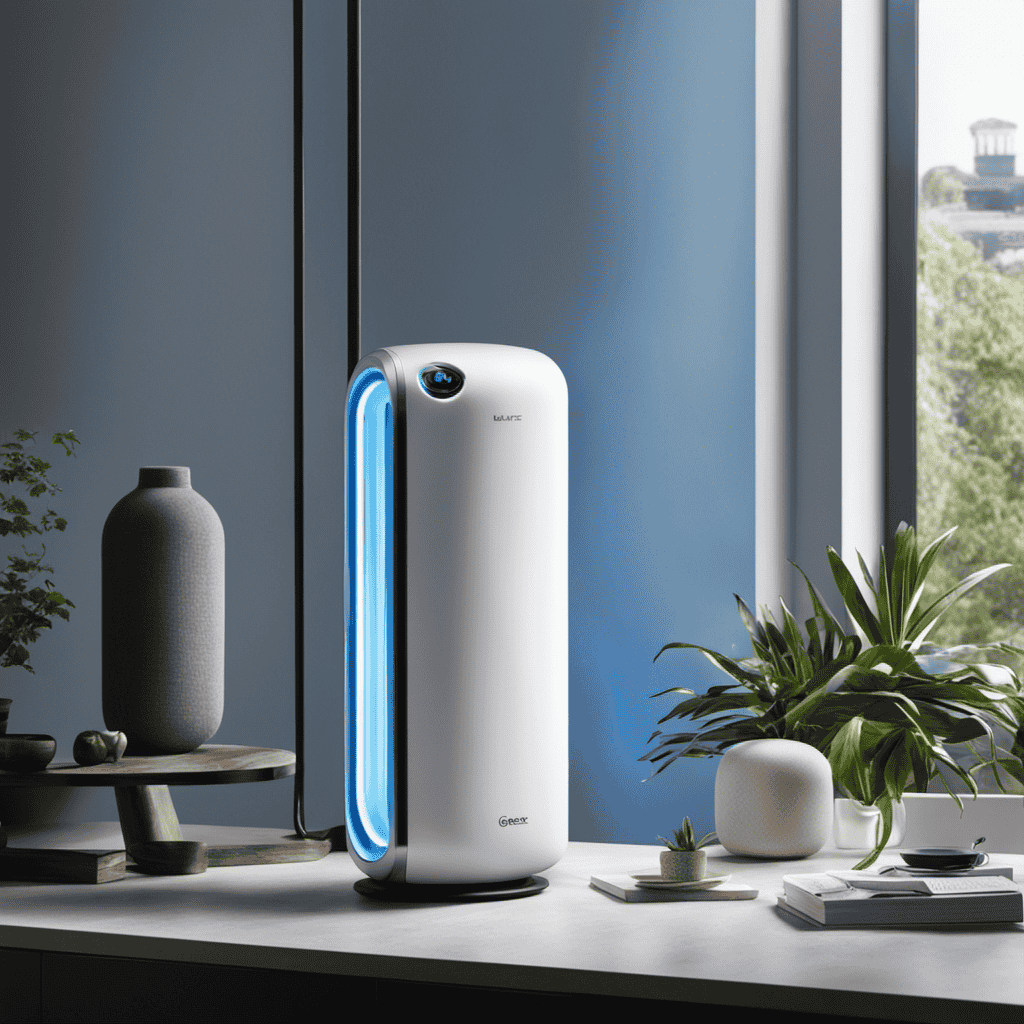
I’ve always been curious about the mysterious ‘UV’ acronym in air purifiers. What does it stand for and how does it function?
Well, fear not, because in this article, we will delve into the fascinating world of UV technology and its role in air purification. Get ready to be amazed as we explore the science behind UV light and discover why it is considered one of the most effective methods of eliminating harmful germs and pollutants from the air we breathe.
Key Takeaways
- UV technology in air purifiers eliminates bacteria, viruses, and harmful microorganisms by disrupting their DNA.
- UV technology provides an additional layer of protection against airborne contaminants and ensures a healthier indoor environment.
- UV light in air purifiers is highly effective in killing bacteria, viruses, and mold spores without the need for filters or chemicals.
- UV-C light in air purification is long-lasting, requires minimal maintenance, and improves indoor air quality.
The Basics of UV Technology
UV technology is a powerful tool in air purifiers. It allows me to effectively eliminate bacteria, viruses, and other harmful microorganisms. The usage of UV technology in air purification is of utmost importance due to its ability to destroy these pathogens at the molecular level.
When air passes through an air purifier equipped with UV technology, it is exposed to UV-C rays. These rays have a wavelength of 254 nanometers. They penetrate the cell walls of microorganisms, disrupting their DNA and preventing them from reproducing. This process effectively neutralizes the harmful effects of bacteria and viruses, making the air cleaner and safer to breathe.
UV technology is a key component in air purifiers. It provides an additional layer of protection against airborne contaminants and ensures a healthier indoor environment.
How UV Light Works in Air Purifiers
To understand how it works, you should know that ultraviolet light in air purifiers helps eliminate harmful particles. The UV light, specifically the UV-C wavelength, disrupts the DNA of microorganisms, rendering them unable to reproduce and causing their demise.
Here are the key points to consider:
-
Pros: UV light is highly effective in killing bacteria, viruses, and mold spores. It provides a chemical-free solution, without the need for filters or chemicals. UV light can reach areas that may be difficult to clean manually, ensuring thorough purification. It operates silently, making it a convenient option for bedrooms and offices.
-
Cons: UV light has limited effectiveness against larger particles like dust and pet dander. It requires regular maintenance to ensure optimal performance, including cleaning the UV lamps and replacing them periodically. UV light can be harmful to humans if directly exposed, so it must be properly shielded and used in conjunction with other air purification technologies.
Incorporating UV light into air purifiers offers a cost-effective solution for eliminating harmful particles, but it is important to weigh the pros and cons.
Now, let’s explore the advantages of UV-C in air purification.
Advantages of UV-C in Air Purification
If you’re considering incorporating UV-C light into your air purification system, you’ll benefit from its highly effective bacteria-killing capabilities. UV-C light, with a wavelength range of 200-280 nanometers, has been proven to effectively destroy microorganisms and inhibit their reproduction.
One of the major advantages of UV-C in air purification is its ability to eliminate harmful bacteria, viruses, and mold spores that may be present in the air. This technology provides an additional layer of protection against airborne contaminants, ensuring cleaner and healthier indoor air.
UV-C light is also known for its long-lasting effectiveness, as it continuously works to disinfect the air without the need for constant maintenance or replacement. With its proven effectiveness and numerous advantages, incorporating UV-C light into your air purification system is a smart choice for improving indoor air quality.
Understanding UV-C Germicidal Effectiveness
In this discussion, I will delve into the proven effectiveness of UV-C in germicidal applications.
UV-C has been extensively studied and has shown remarkable results in eliminating a wide range of microorganisms.
Furthermore, I will compare UV-C with other methods commonly used for disinfection, highlighting the advantages and limitations of each approach.
Lastly, we will explore the safety concerns associated with UV-C, addressing the potential risks and precautions that need to be taken into account when using this technology.
UV-C Effectiveness Proven
UV-C has been proven to be effective in killing bacteria and viruses in air purifiers. This technology utilizes ultraviolet light with a wavelength of 254 nanometers to destroy the DNA and RNA of microorganisms, rendering them unable to reproduce or cause harm.
Here are some key points to consider regarding UV-C effectiveness in air purifiers:
-
UV-C safety concerns: While UV-C radiation can be harmful to humans if directly exposed, air purifiers with UV-C technology are designed to prevent any leakage of UV-C light into the environment. Special shielding and safety features ensure that the UV-C light is contained within the purifier, making it safe for home or office use.
-
UV-C vs ozone: Unlike ozone generators, which produce ozone gas as a byproduct, UV-C air purifiers do not generate ozone. Ozone can be harmful to human health, causing respiratory issues and lung damage. UV-C technology offers a safe and ozone-free method of disinfection.
-
Third-party testing: Many UV-C air purifiers undergo rigorous testing by independent laboratories to validate their effectiveness in killing bacteria and viruses. Look for certifications such as AHAM Verifide or Energy Star, which ensure that the product meets strict performance and safety standards.
-
Maintenance requirements: UV-C lamps in air purifiers have a limited lifespan and need to be replaced periodically. Regular maintenance, such as cleaning the lamp and filters, is essential to ensure optimal performance and longevity of the air purifier.
UV-C Vs. Other Methods
Now that we have established the effectiveness of UV-C in air purification, let’s compare it to other methods such as ozone purification and HEPA filters.
When it comes to UV-C versus ozone purification, it is important to note that while both methods can eliminate harmful microorganisms, they work in different ways. UV-C uses short-wavelength ultraviolet light to disrupt the DNA of microorganisms, rendering them unable to reproduce. On the other hand, ozone purification releases ozone gas, which can react with and eliminate pollutants in the air.
However, it is worth mentioning that ozone purification can produce harmful byproducts and may not be suitable for occupied spaces. In contrast, UV-C is a safe and reliable method that does not produce any harmful byproducts.
In terms of UV-C versus HEPA filters, UV-C has the advantage of being able to eliminate not only microorganisms but also viruses and mold spores, which can pass through HEPA filters. Additionally, UV-C is a continuous process, whereas HEPA filters can become clogged and require replacement.
Overall, UV-C offers a more comprehensive and continuous purification solution compared to ozone purification and HEPA filters.
Safety Concerns With Uv-C?
When considering safety concerns with UV-C, it’s important to be aware of potential exposure risks and take necessary precautions. UV-C safety is crucial in order to prevent any potential hazards. Here are some key points to consider:
- UV-C radiation can cause skin and eye irritation, burns, and even long-term damage if exposed for extended periods.
- Direct exposure to UV-C light can be harmful, so it’s important to avoid looking directly at the light source or touching the UV-C bulb.
- UV-C radiation can also damage materials, such as plastics, fabrics, and artwork, so it’s essential to consider the compatibility of objects in the environment.
- It’s crucial to follow manufacturer instructions and guidelines when using UV-C devices to ensure safe and effective operation.
Understanding the potential risks of UV-C exposure is vital for maintaining a safe environment. Now, let’s explore how UV-C air purifiers compare to other air purification methods.
UV-C Air Purifiers Vs. Other Air Purification Methods
There are various air purification methods besides UV-C that can be considered. When comparing UV-C air purifiers with HEPA filters, it’s important to understand their differences.
UV-C air purifiers use ultraviolet light to destroy or inactivate microorganisms, such as bacteria and viruses, by damaging their DNA or RNA. This method is effective in reducing airborne pathogens, but it may not be as effective in removing other types of pollutants like dust, pollen, or pet dander.
On the other hand, HEPA filters physically capture particles as small as 0.3 microns, including allergens and pollutants. They work by trapping these particles in a dense filter material.
While UV-C air purifiers can be beneficial in killing microorganisms, HEPA filters provide a more comprehensive approach to air purification by removing a wider range of pollutants.
Factors to Consider When Choosing a UV Air Purifier
When considering a UV air purifier, there are several key points to keep in mind.
First and foremost, effective germ elimination is crucial in maintaining a clean and healthy environment. The UV radiation emitted by these purifiers is highly effective in neutralizing bacteria, viruses, and other microorganisms that may be present in the air.
However, it is important to also consider safety precautions, as excessive exposure to UV radiation can have harmful effects on human health.
Effective Germ Elimination
UV in air purifiers is effective at eliminating germs. The use of UV-C disinfection technology in air purifiers has proven to be a reliable method for airborne pathogen control. Here are four reasons why UV is an excellent tool for germ elimination:
- UV-C light damages the DNA and RNA of microorganisms, preventing them from reproducing and causing harm.
- UV-C light has a broad spectrum of effectiveness, targeting a wide range of bacteria, viruses, and other pathogens.
- UV-C light works quickly, with many air purifiers capable of eliminating germs within minutes of exposure.
- UV-C disinfection is a chemical-free process, making it a safe and environmentally friendly option for germ elimination.
Safety and UV Radiation
To ensure your safety, it’s important to take proper precautions when using devices that emit UV radiation. UV radiation, although useful for germ elimination in air purifiers, can pose certain risks if not handled properly.
Exposure to UV radiation can lead to skin burns, eye damage, and even an increased risk of skin cancer. It is crucial to limit direct exposure to UV radiation and use protective measures such as wearing UV-blocking goggles and gloves.
Additionally, it is important to avoid looking directly at UV light sources and to ensure that the device is properly installed and maintained, following the manufacturer’s instructions. Regularly checking and replacing UV bulbs is also essential to maintain their effectiveness and minimize the risks associated with UV exposure.
Frequently Asked Questions
Can UV Air Purifiers Eliminate All Types of Airborne Contaminants?
Yes, UV air purifiers can effectively eliminate various airborne contaminants such as allergens and mold spores. The UV light destroys the DNA of these particles, rendering them harmless and improving indoor air quality.
How Long Does It Take for UV-C Light to Kill Germs and Bacteria in the Air?
It takes a few seconds for UV-C light to kill germs and bacteria in the air. The effectiveness of UV-C light against viruses is well-documented, making UV air purifiers beneficial for allergy relief.
Are UV Air Purifiers Safe for Use Around Pets and Children?
UV air purifiers provide numerous benefits, including the ability to kill germs and bacteria. However, it’s important to consider potential side effects. As for the safety around pets and children, further research is needed.
Do UV Air Purifiers Produce Any Harmful Byproducts or Ozone?
UV air purifiers use ultraviolet light to kill bacteria and viruses in the air. However, they do not produce harmful byproducts or ozone. It is a safe and effective way to improve indoor air quality.
Are UV Air Purifiers Effective in Reducing Odors and Eliminating Household Smells?
Using UV air purifiers effectively reduces household odors. Their impact on indoor air quality is significant. UV technology eliminates odor-causing bacteria, fungi, and viruses, improving air freshness and cleanliness.
Conclusion
In conclusion, the use of UV technology in air purifiers offers numerous advantages in terms of germicidal effectiveness. UV-C light works by destroying the DNA of microorganisms, rendering them inactive and unable to reproduce. This method is highly effective in removing bacteria, viruses, and other harmful pathogens from the air.
While there are other air purification methods available, such as filtration and ionization, UV-C technology provides a unique and powerful solution. However, it is important to note that further research is needed to fully understand the extent of its effectiveness and potential drawbacks.
At Aero Guardians, where every piece of information aims to make the world a breath fresher, Samuela’s role as an author has been nothing short of transformative. With a penchant for weaving stories around the science of air purification, Samuela has enriched the platform with content that is both enlightening and captivating.
-
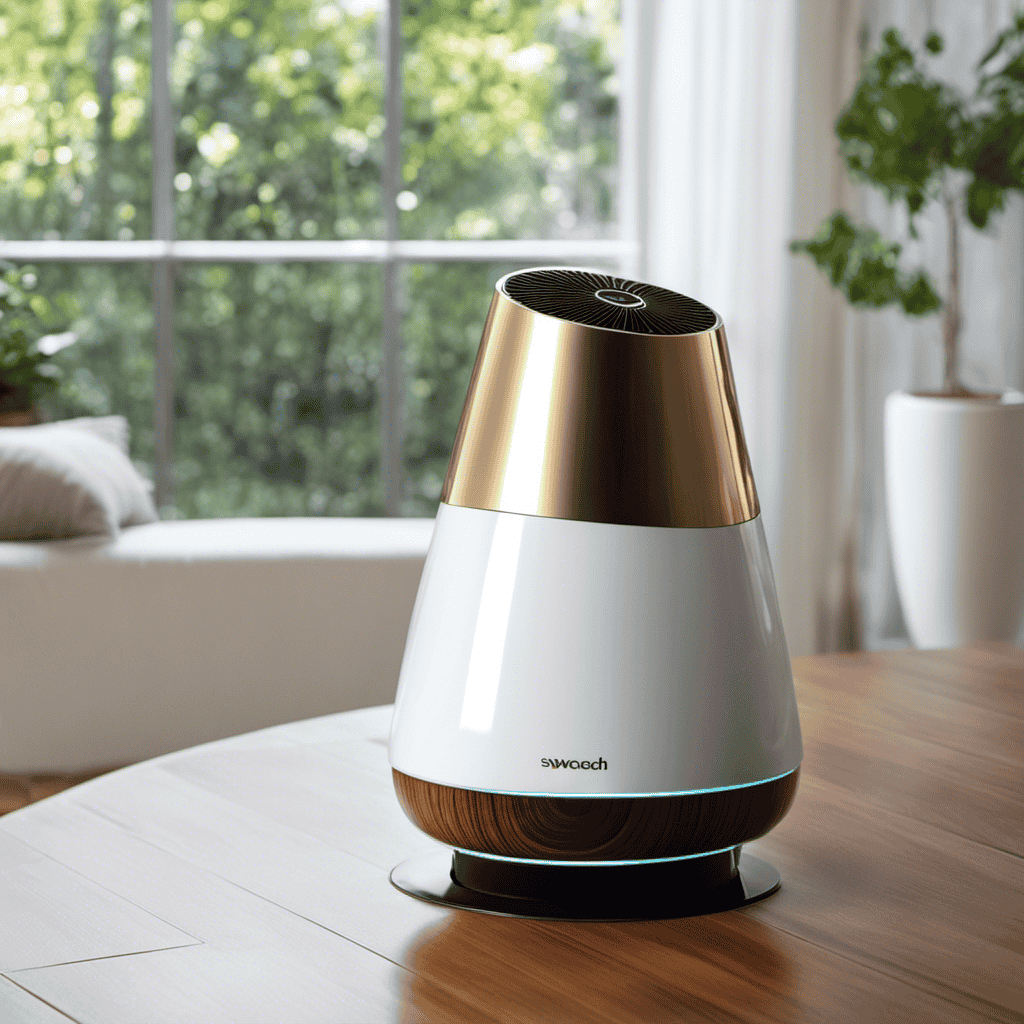
 Types of Air Purifiers4 months ago
Types of Air Purifiers4 months agoWhat Is an Air Purifier
-
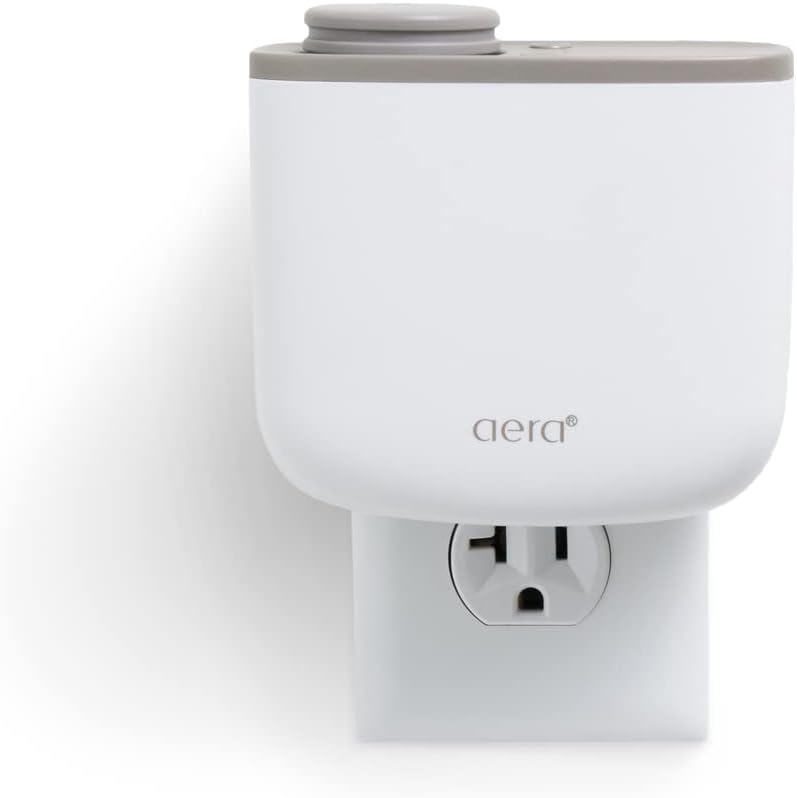
 Vetted2 months ago
Vetted2 months agoAera Mini Review: Smart Home Fragrance Diffuser With Hypoallergenic Scent Technology (2023)
-
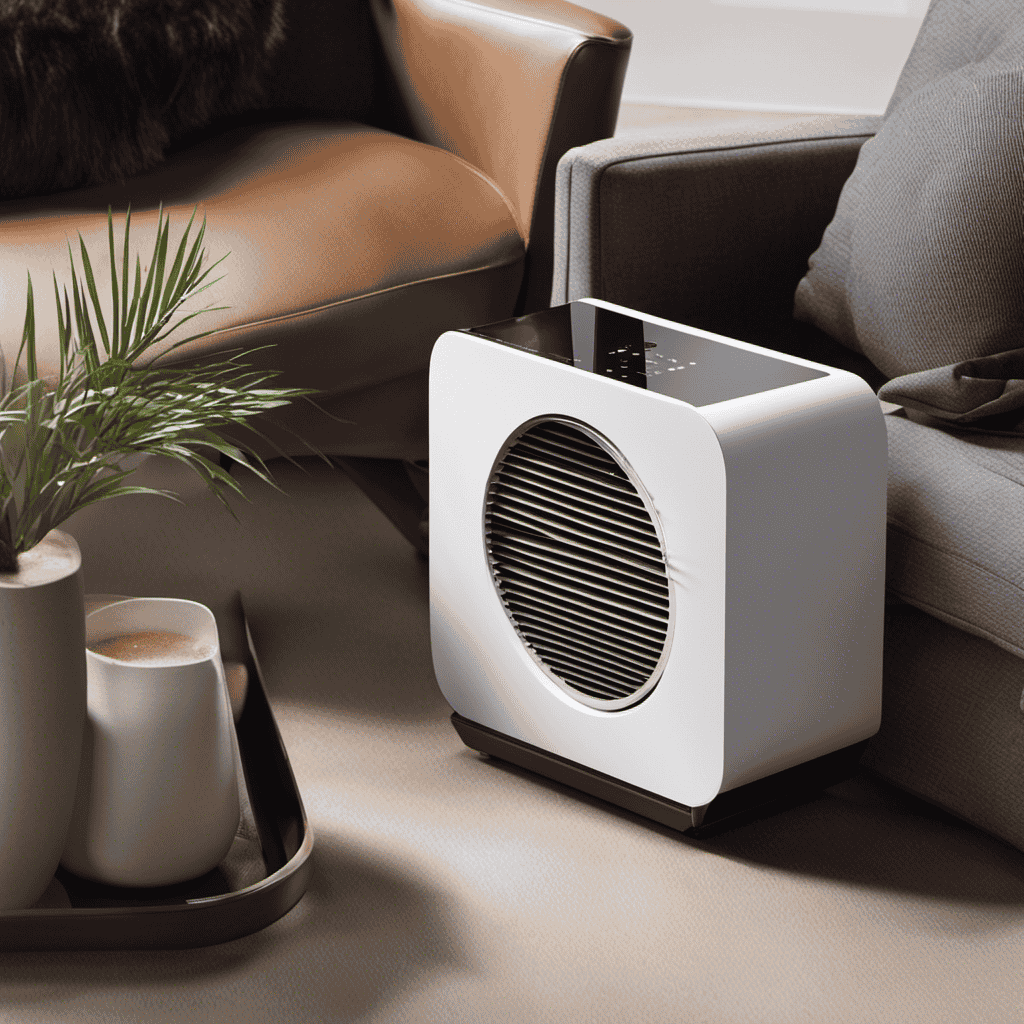
 Air Purifier Guides3 months ago
Air Purifier Guides3 months agoHow to Reset Filter on Miko Air Purifier
-
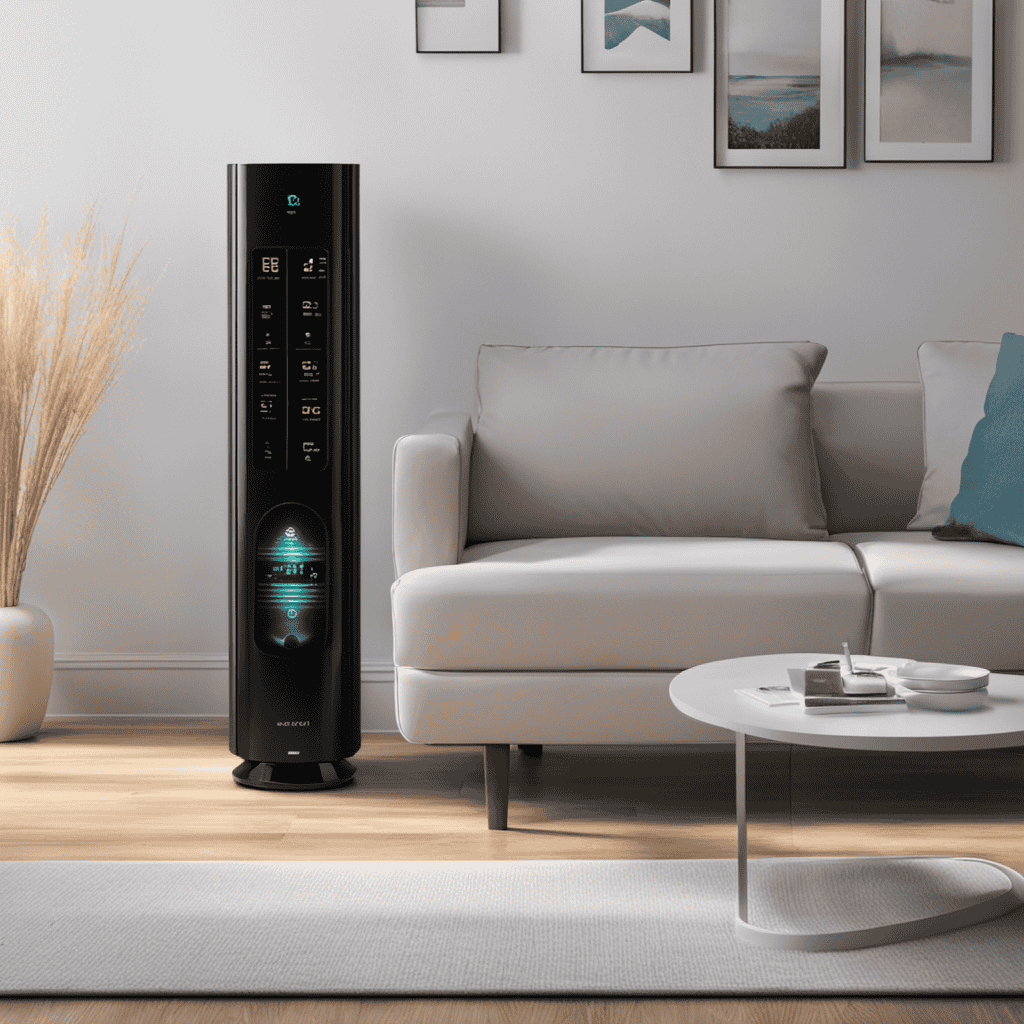
 FAQs - Advanced Queries1 week ago
FAQs - Advanced Queries1 week agoWhat Do the Numbers on My Air Purifier Mean
-
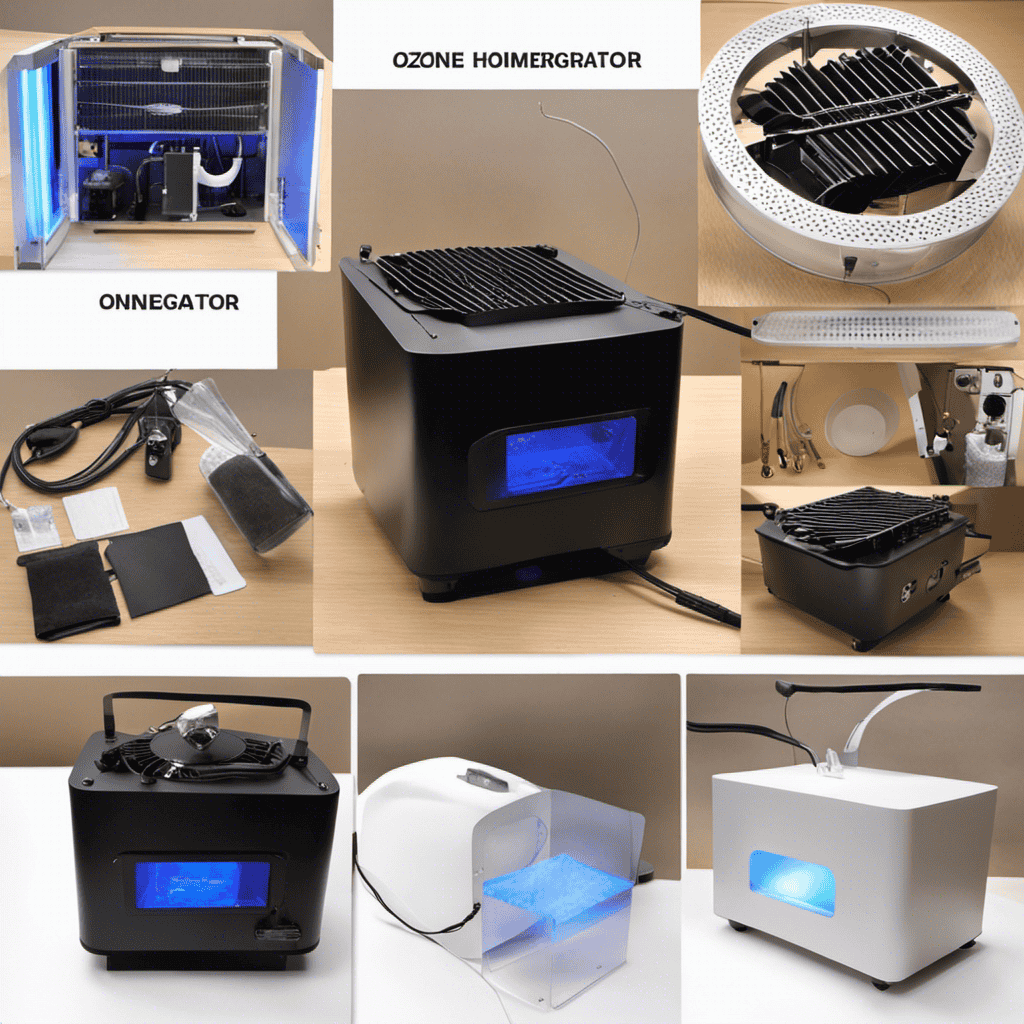
 Air Purifier Guides2 weeks ago
Air Purifier Guides2 weeks agoHow to Make a Homemade Ozone Generator (Air Purifier
-
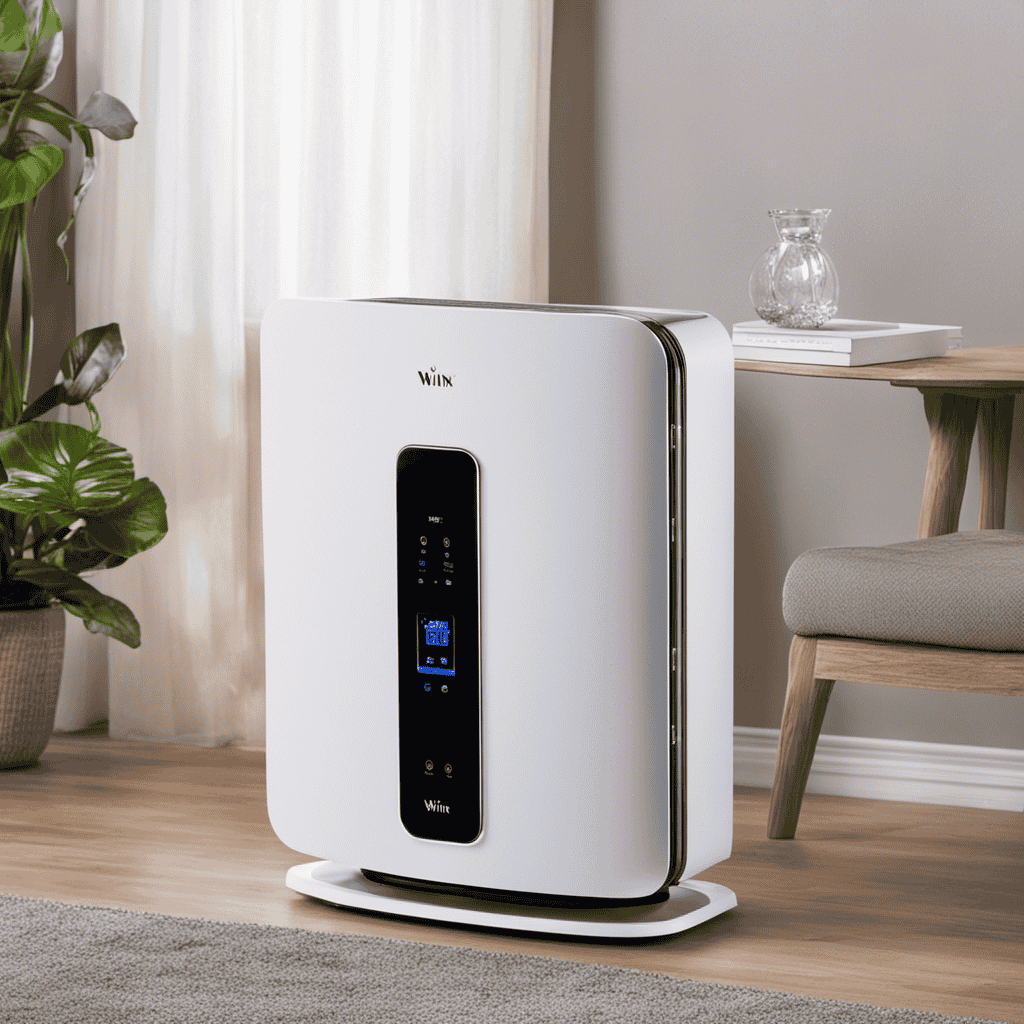
 Maintenance and Tips5 months ago
Maintenance and Tips5 months agoHow to Reset Filter Light on Winix Plasmawave Air Purifier
-
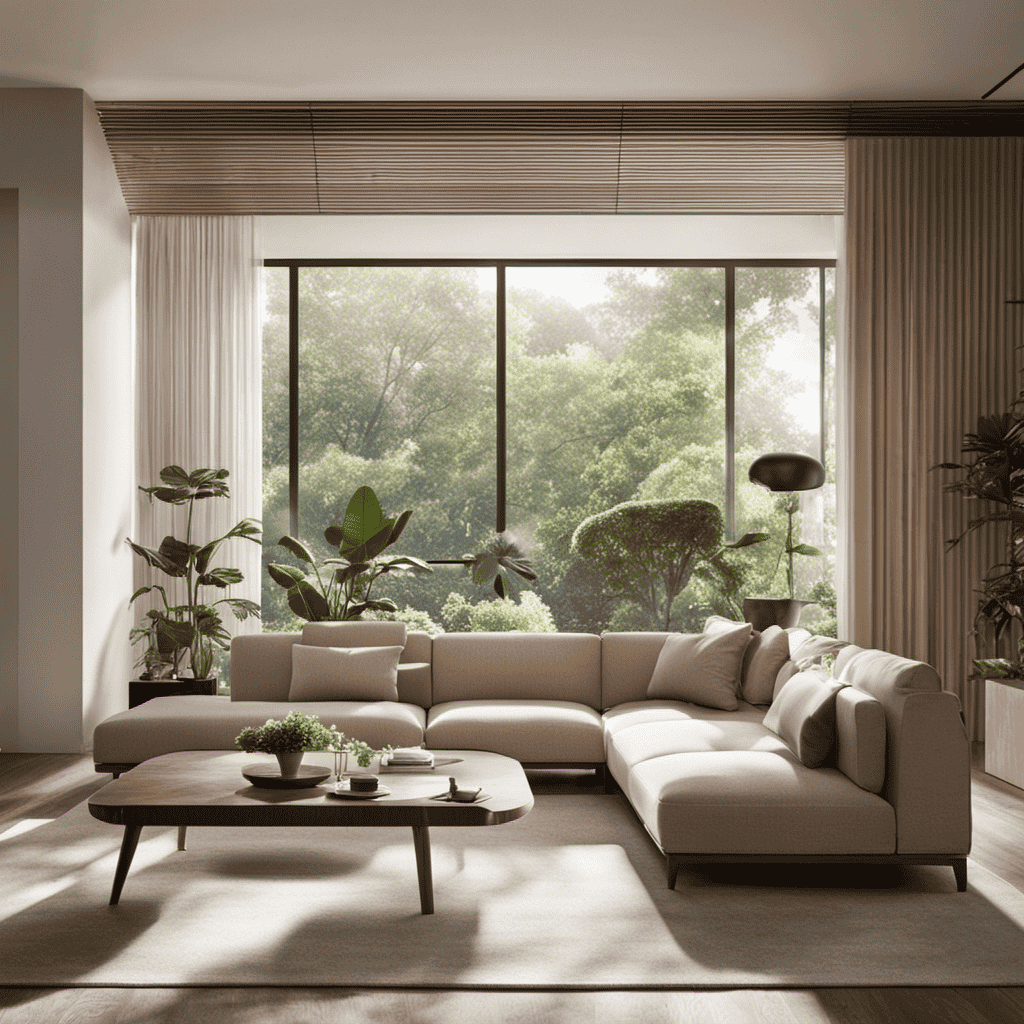
 FAQs - Advanced Queries5 months ago
FAQs - Advanced Queries5 months agoWhen to Use Ionizer on Coway Air Purifier
-
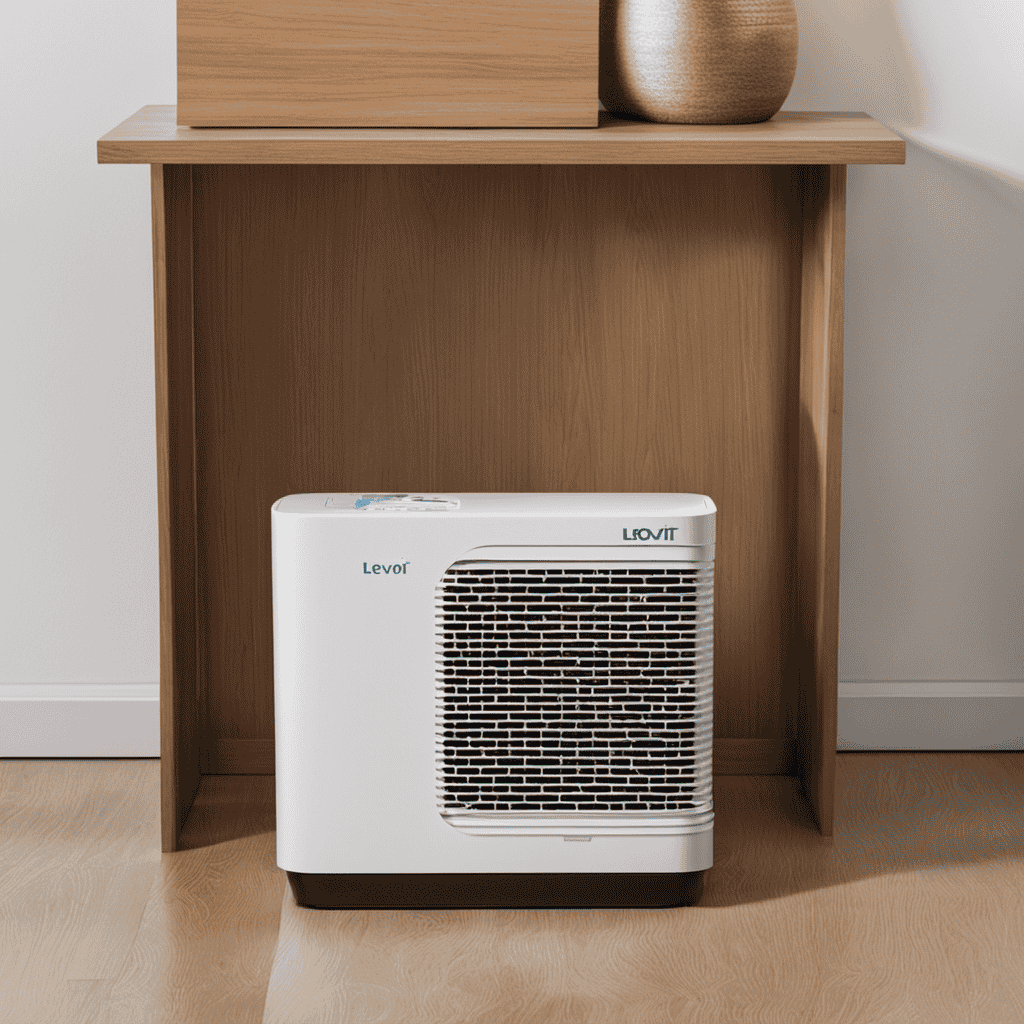
 Air Purifier Guides5 months ago
Air Purifier Guides5 months agoHow to Dispose of Air Purifier Filter Levoit








